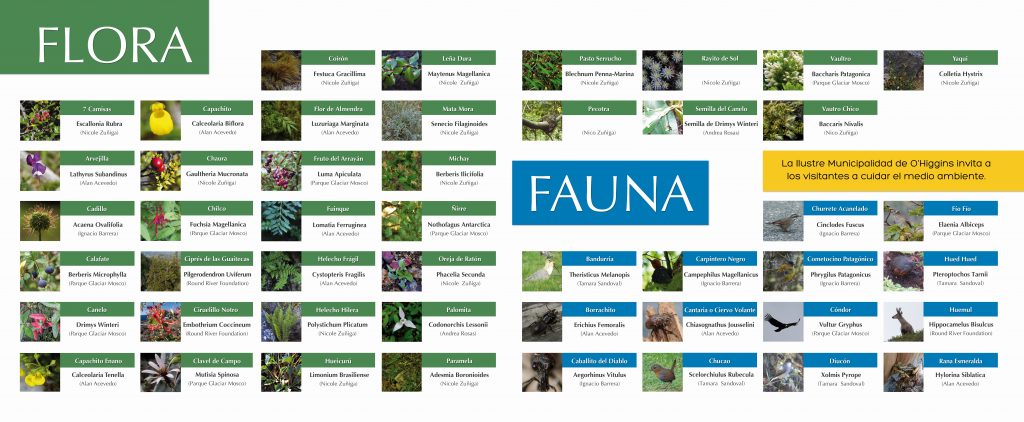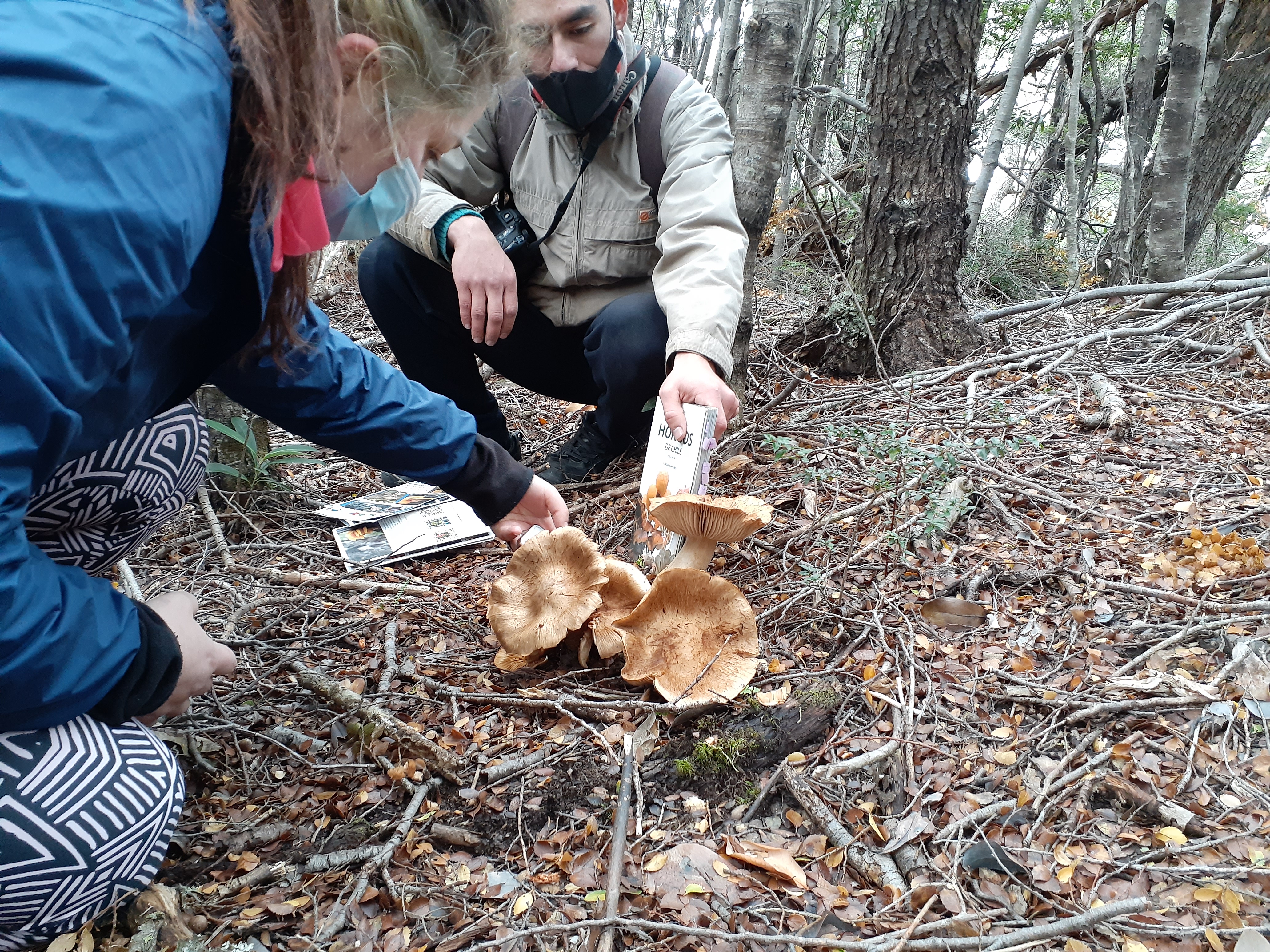
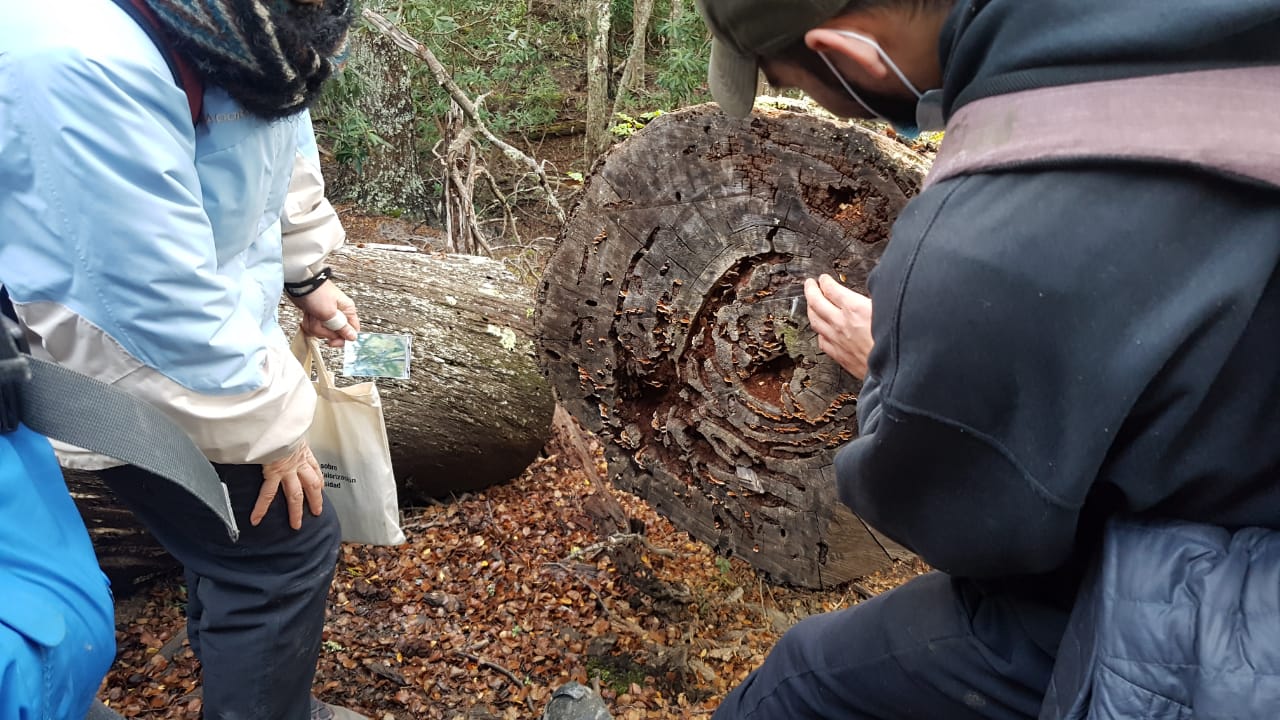
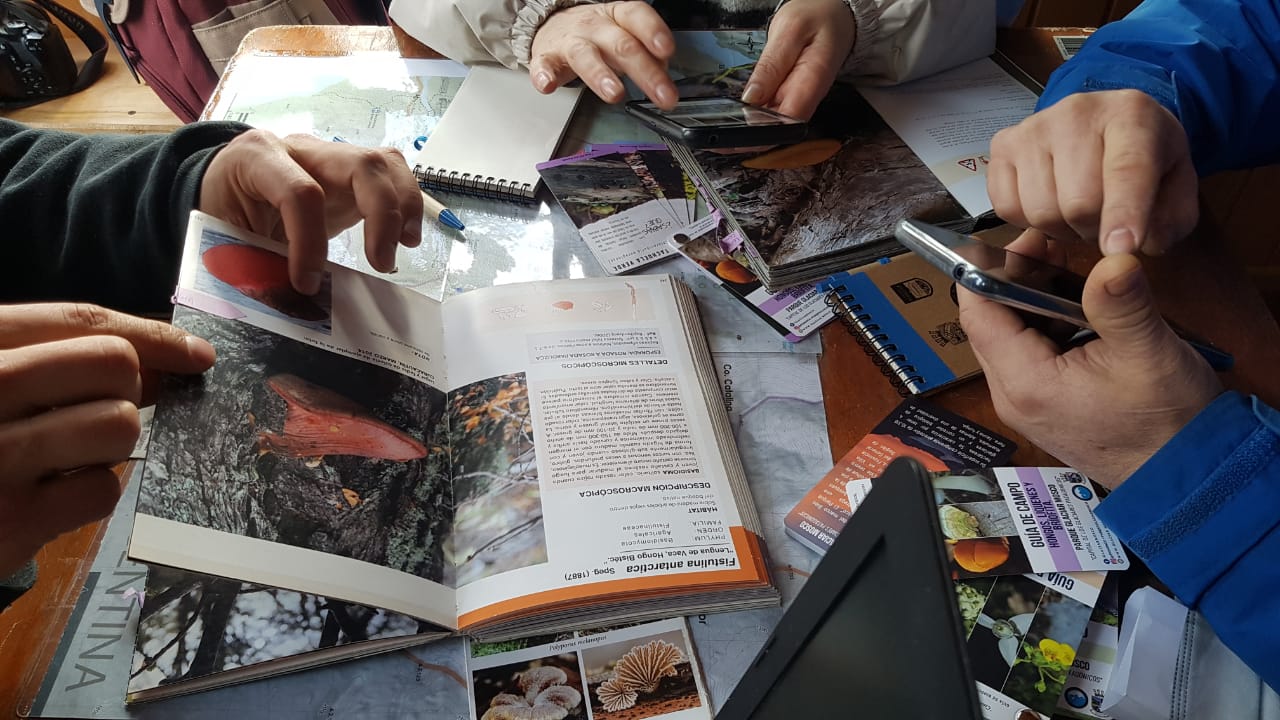
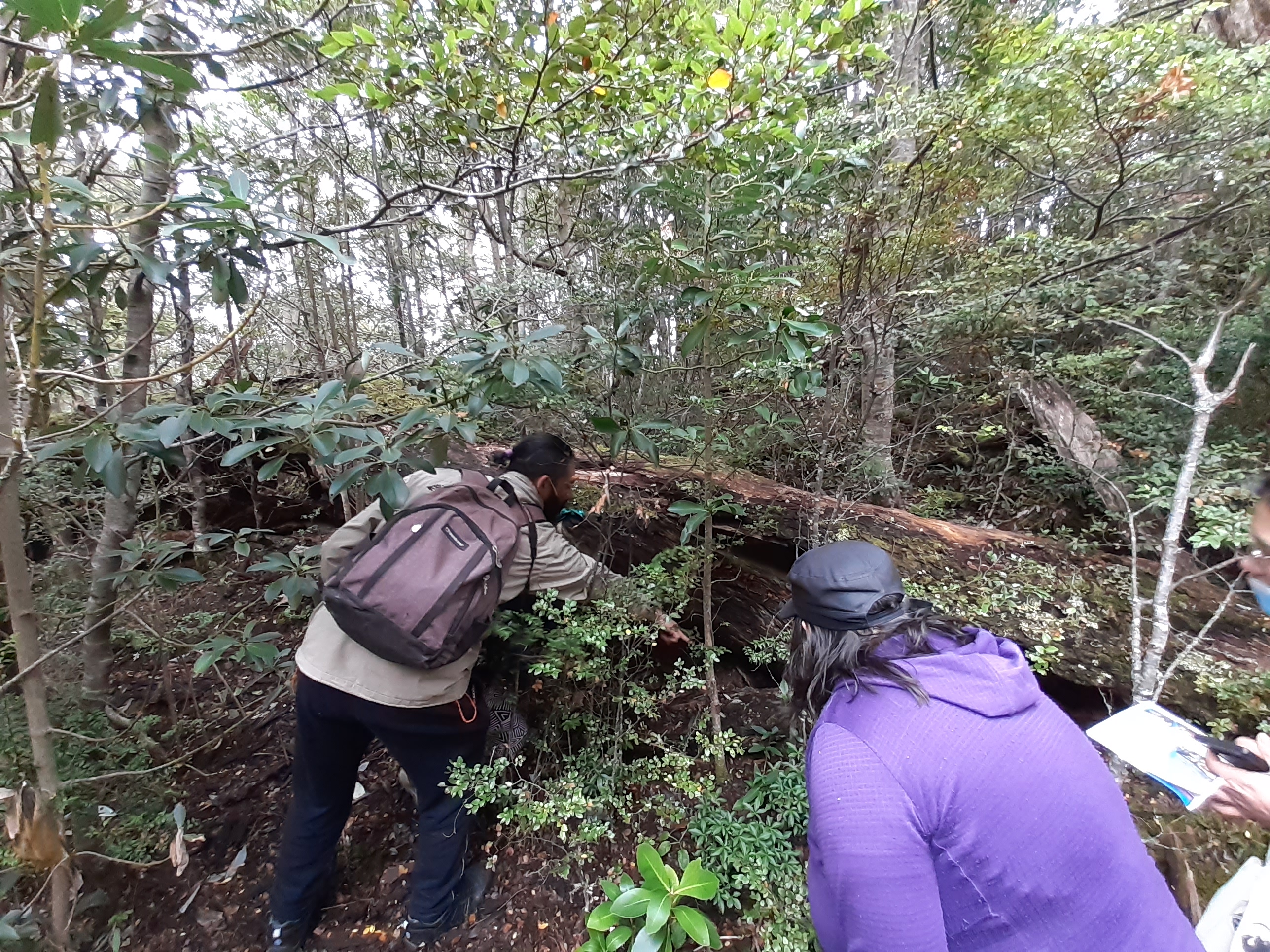
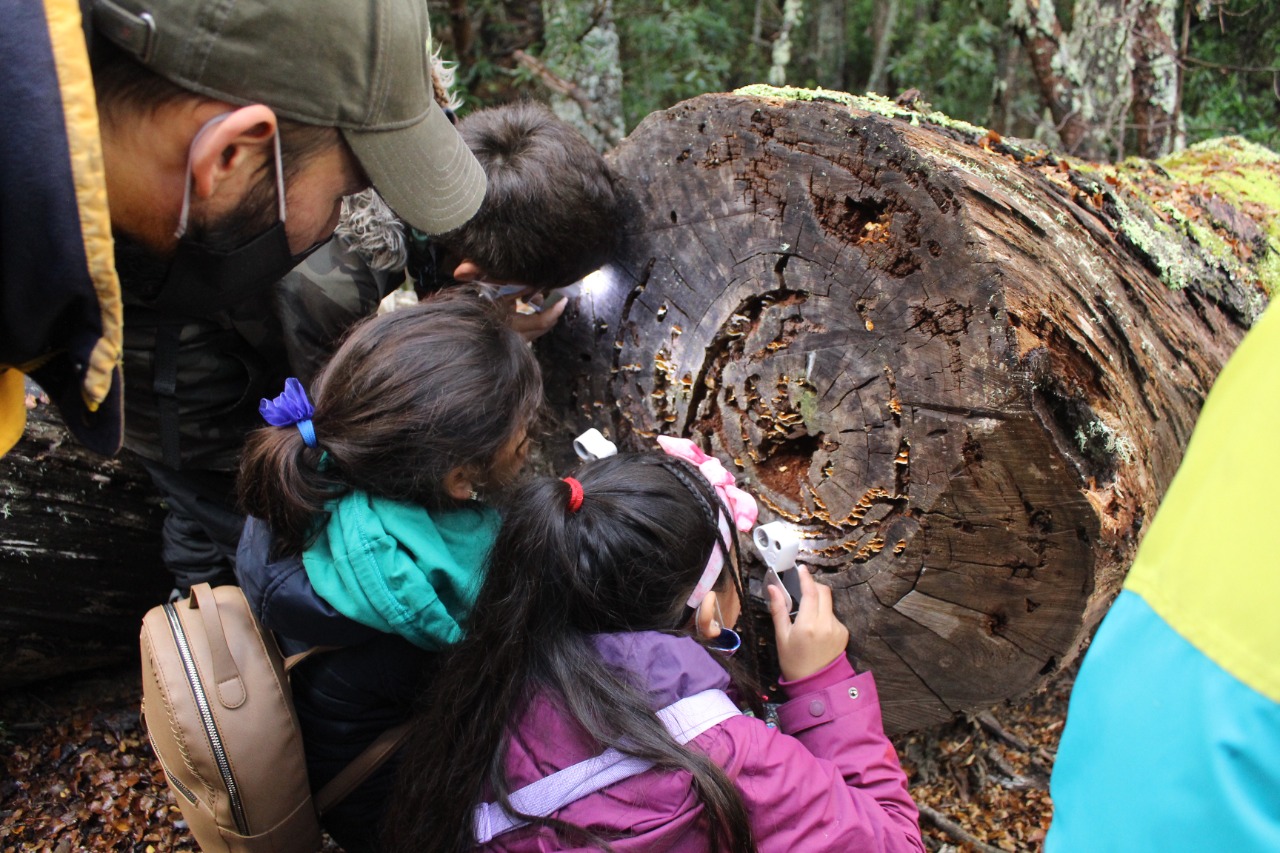

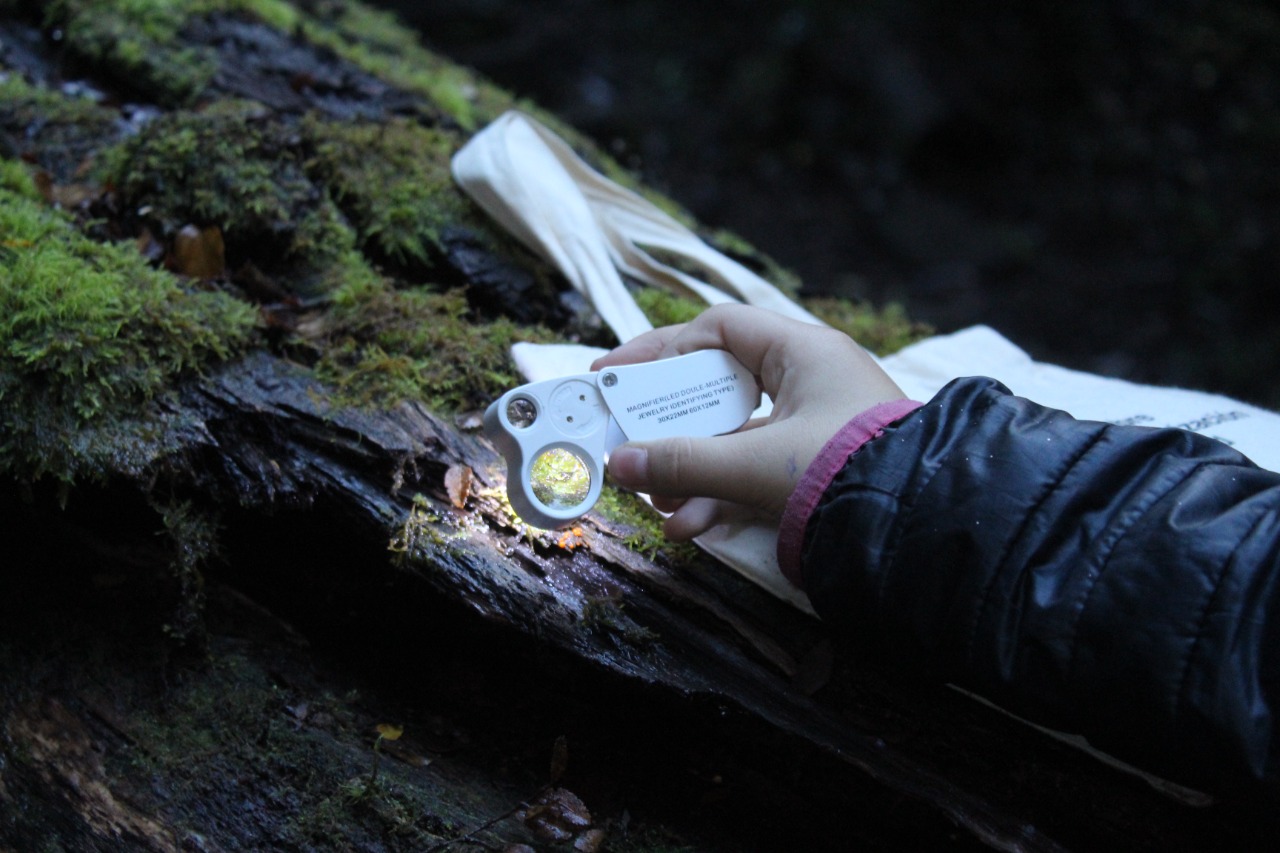
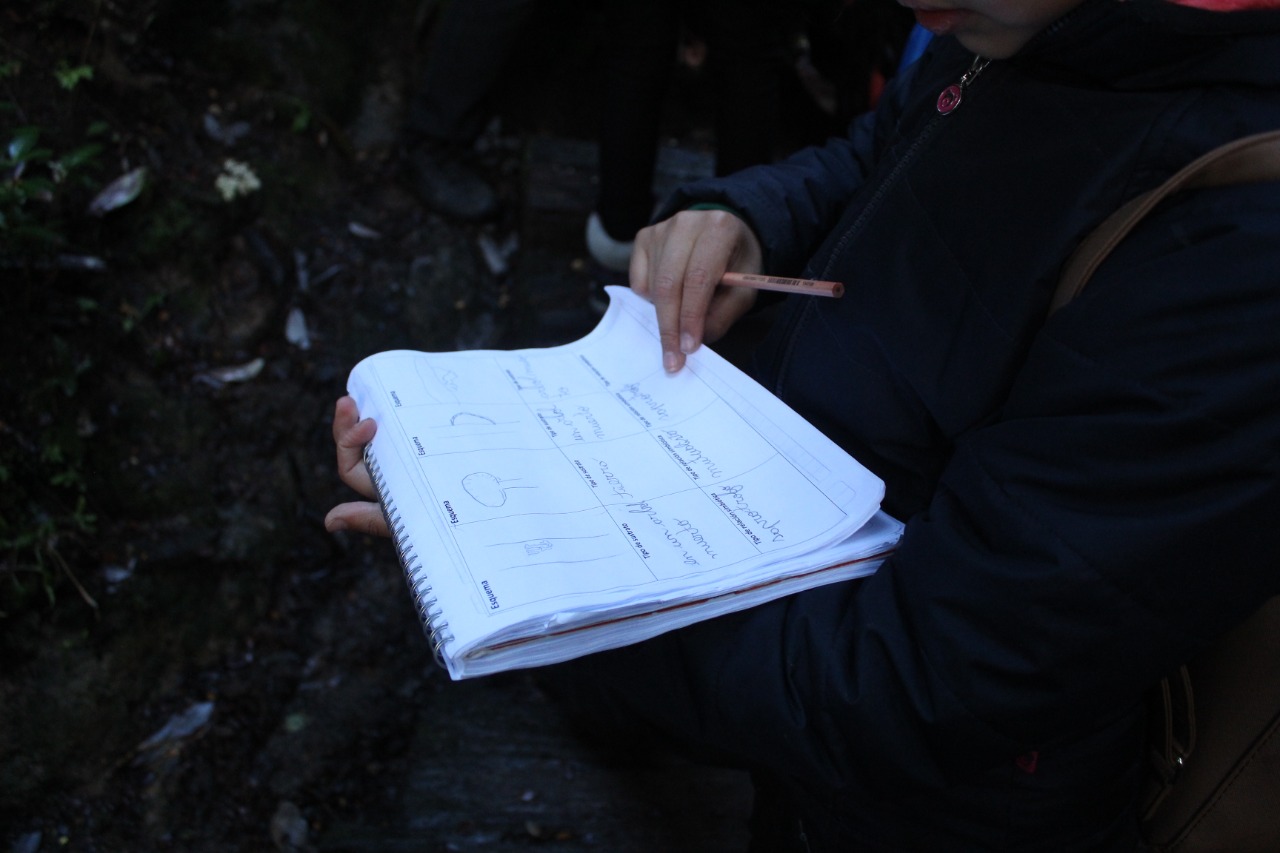
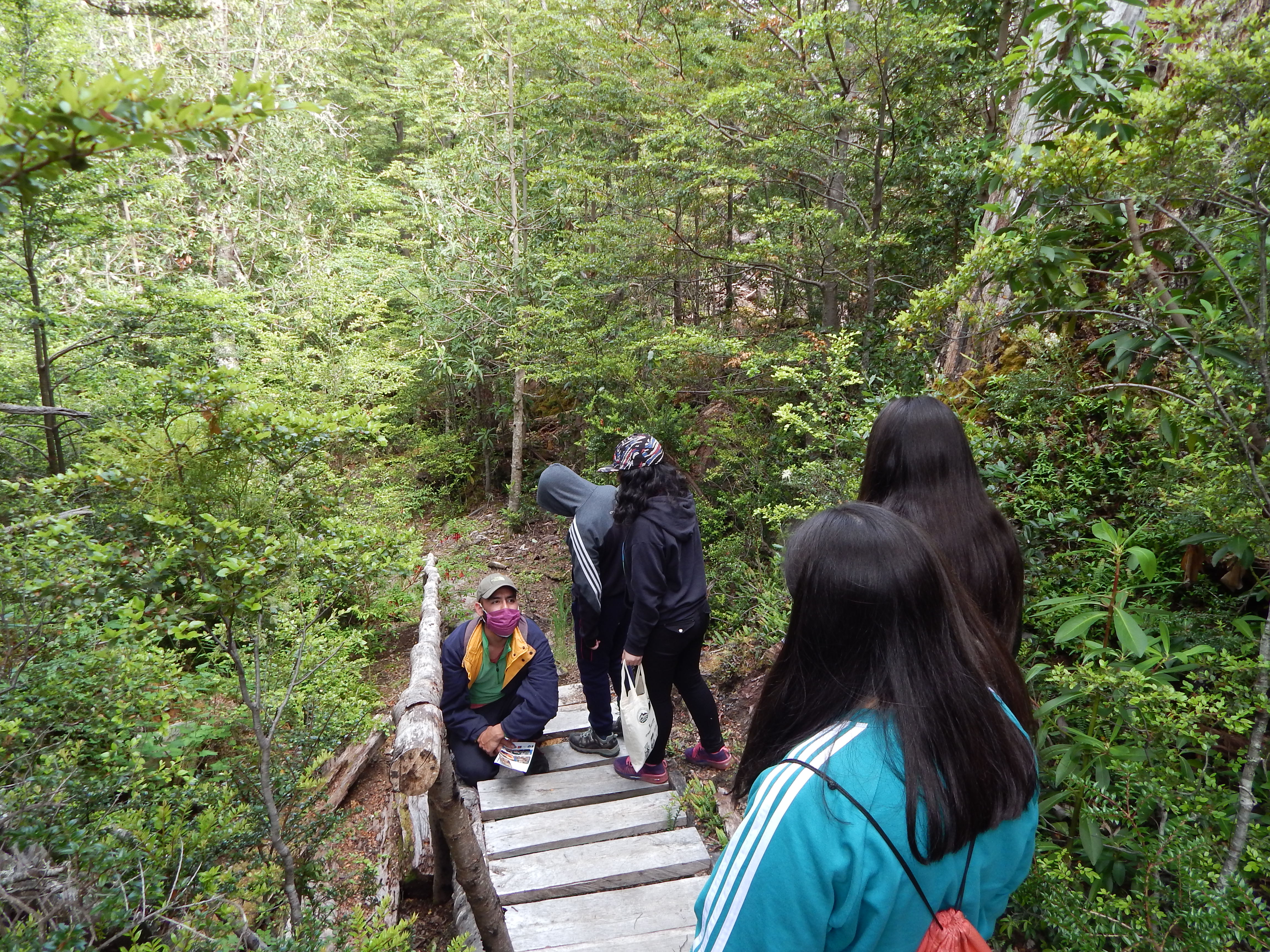
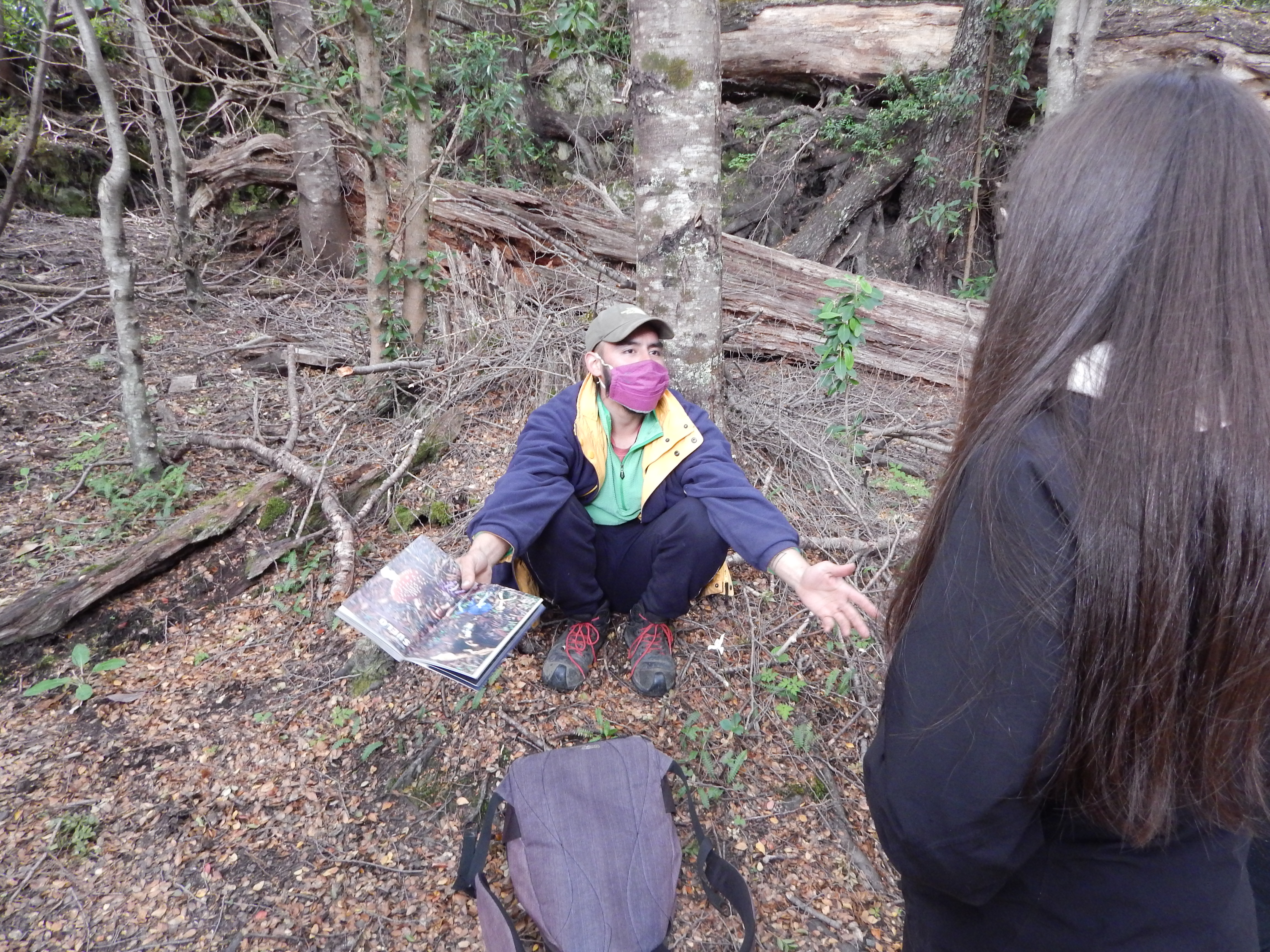
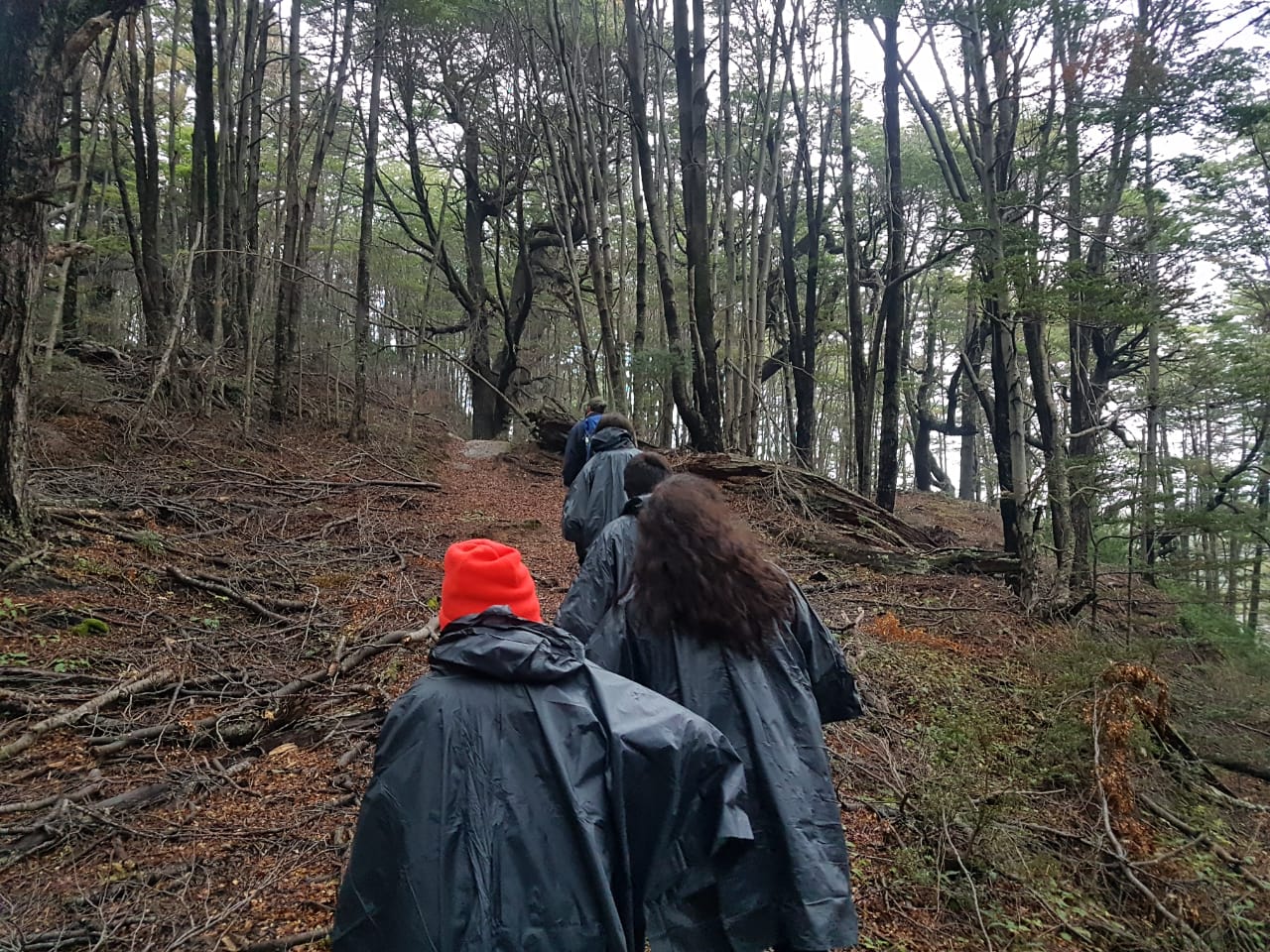
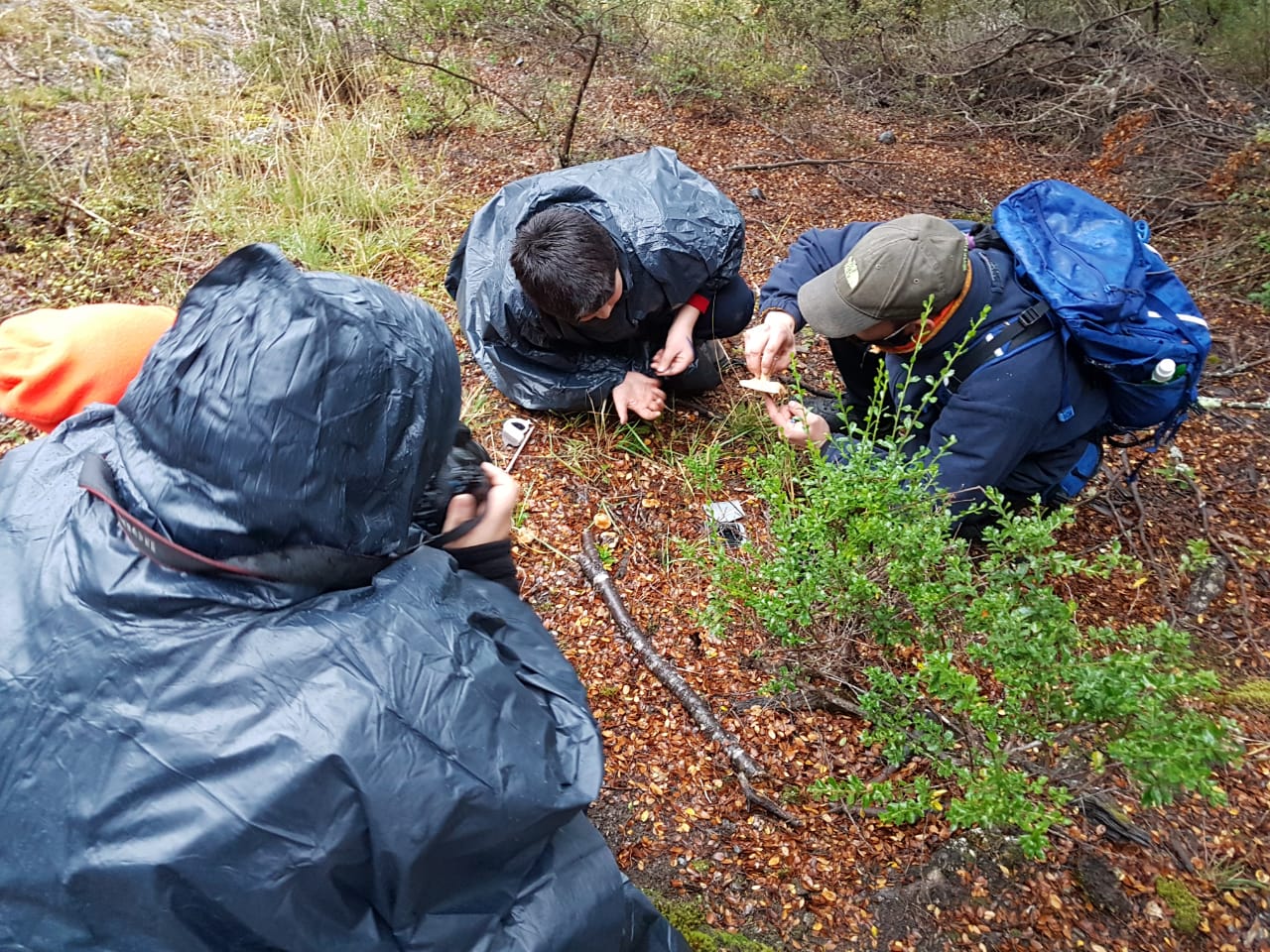
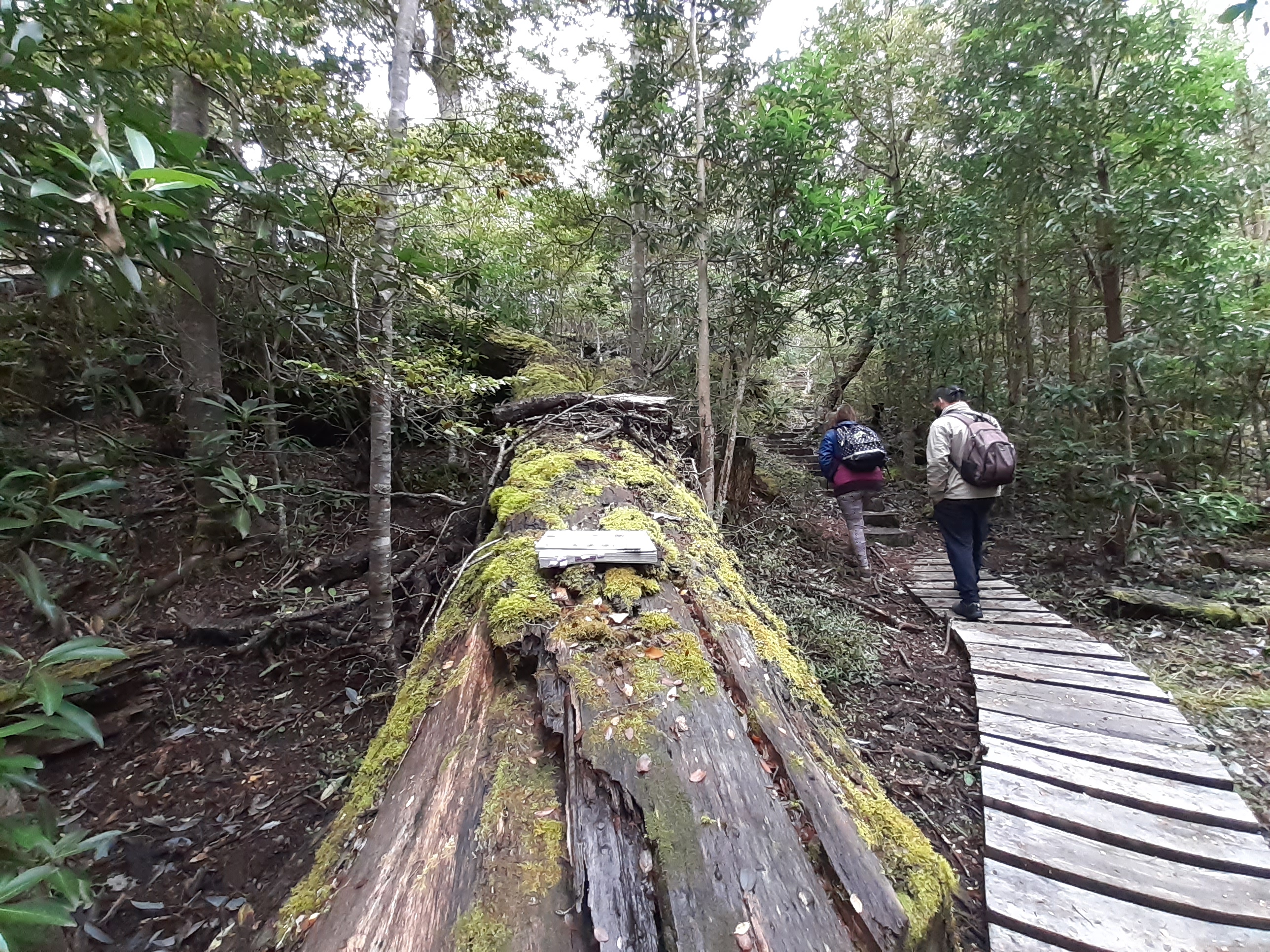
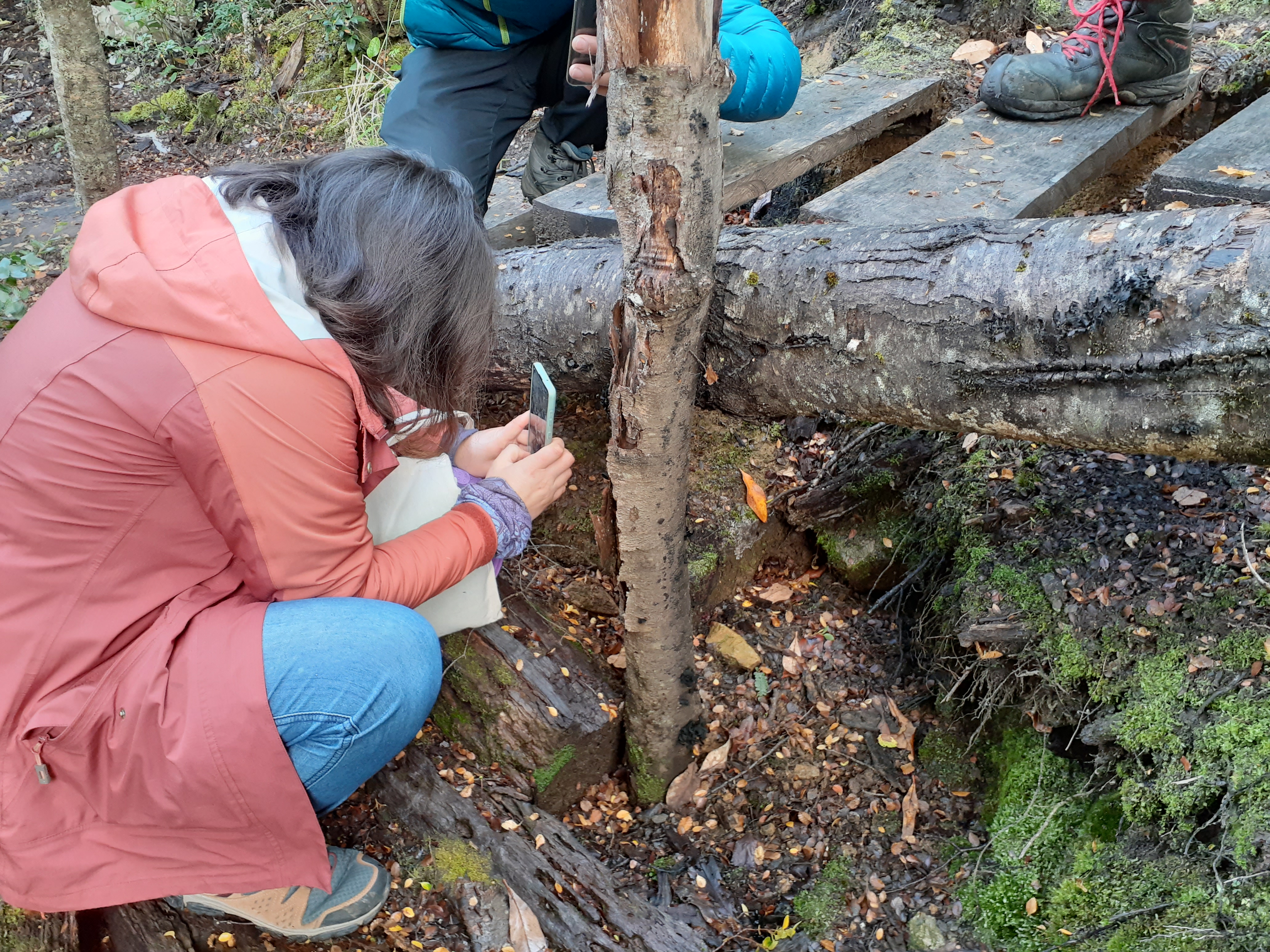


Fungi species identification workshop
Since it was not possible to continue with the Second Version of the Biodiversity Awareness and Valorization Seminar due COVID-19, we decided to prepare a serie os microworkshops related to fungi species identification, for young people and adults (separately). To carry on these workshops we looked for a local guide with the expertise on local biodiversity; Alan Acevedo Muñoz. For these activities, we delivered some items to the participants: field guides, small notebook, magnifying glass and a copy of the visual material from Minga comunal 2019. The participants guided by Alan, walked on parts of Parque Glaciar Mosco’s trails while they seraching for the species on different subtratum. They received information about the role of fungi species for the ecosystem and other uses these have (gatronomy, medicine, cultural uses for example), the type of fungi that exist and their general characteristics. With these workshops we hope the local community know more about the forest’s small species, and contribute on their protection and conservation, taking in consideration the vital role they have as the greatest decomposer of organic material.
Local Community Minga 2019
In this opportunity, we worked along with Liceo Pioneros del Sur and CONAF and wanted to approach one of our principal topics, which is huemul’s protection, and the new topic that we have been developing this year: fungi kingdom. Once again, we ask people to share their photographs of huemul and fungi species taken in O’Higgins. We included the pictures and very basic but important information about the protection of the huemul’s habitat and some characteristics of the role of fungi on the ecosystems. This material was thought to be given on the second version of the Seminar about Biodiversity Awareness and Valorization. Unfortunately, due to COVID, we had to cancel the event. Despite that, we wanted to share this material so people can know a little bit more about the species that live inside the park and help us to protecting it. Every specie has value and an important role on the ecosystems.
We want to thank everyone who sent their pictures of huemul and fungi kingdom!


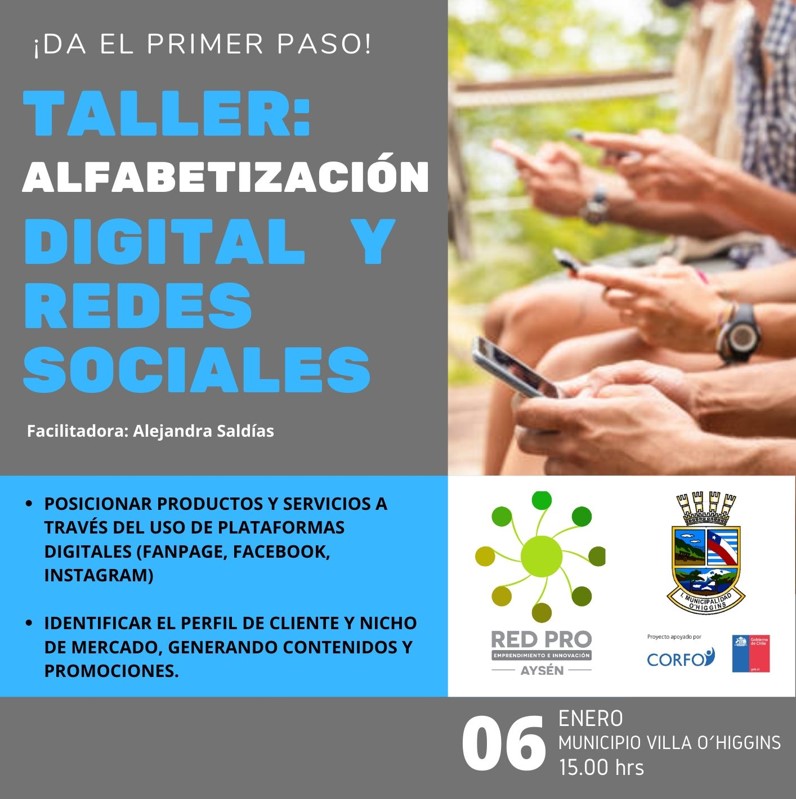
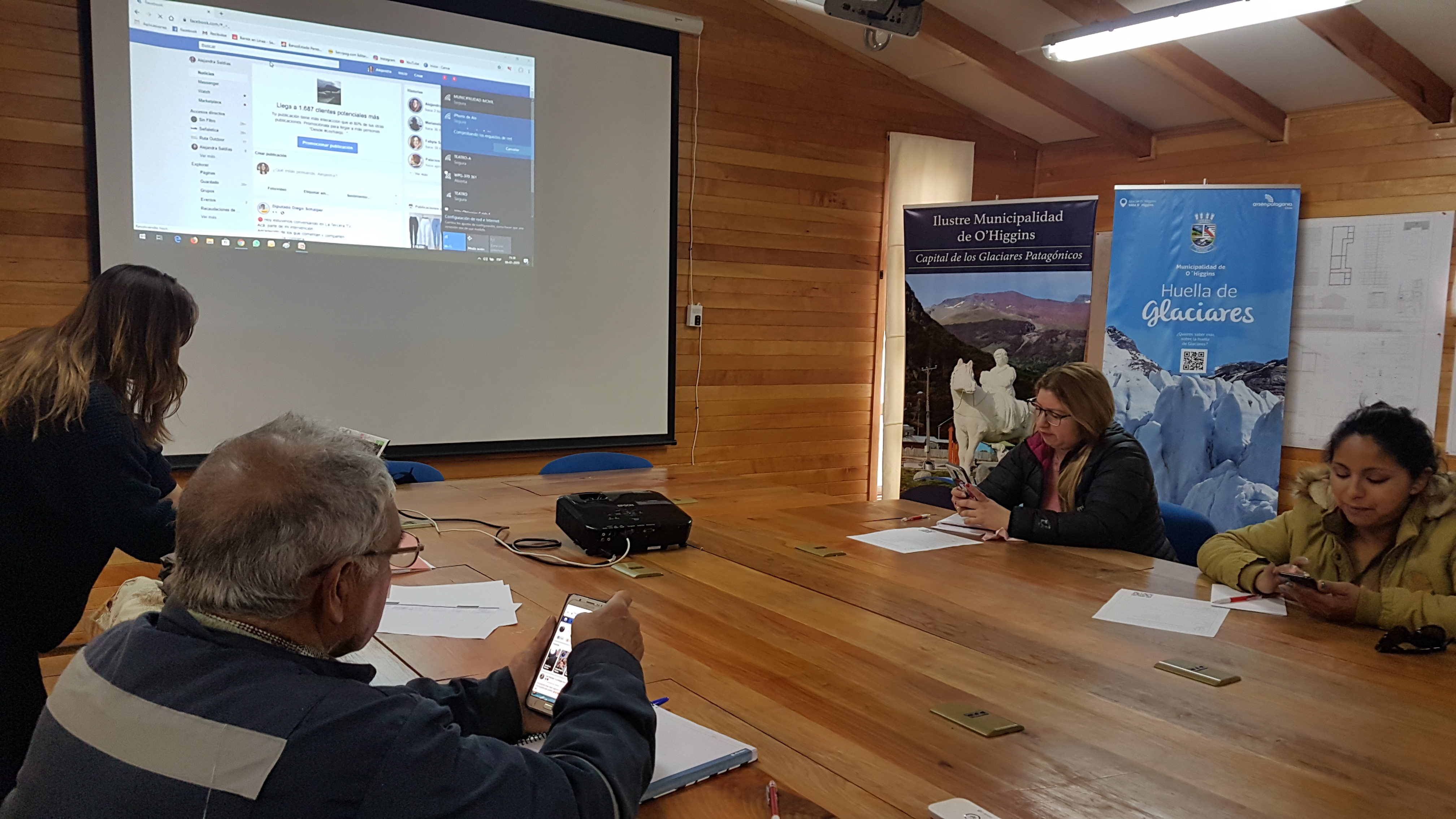
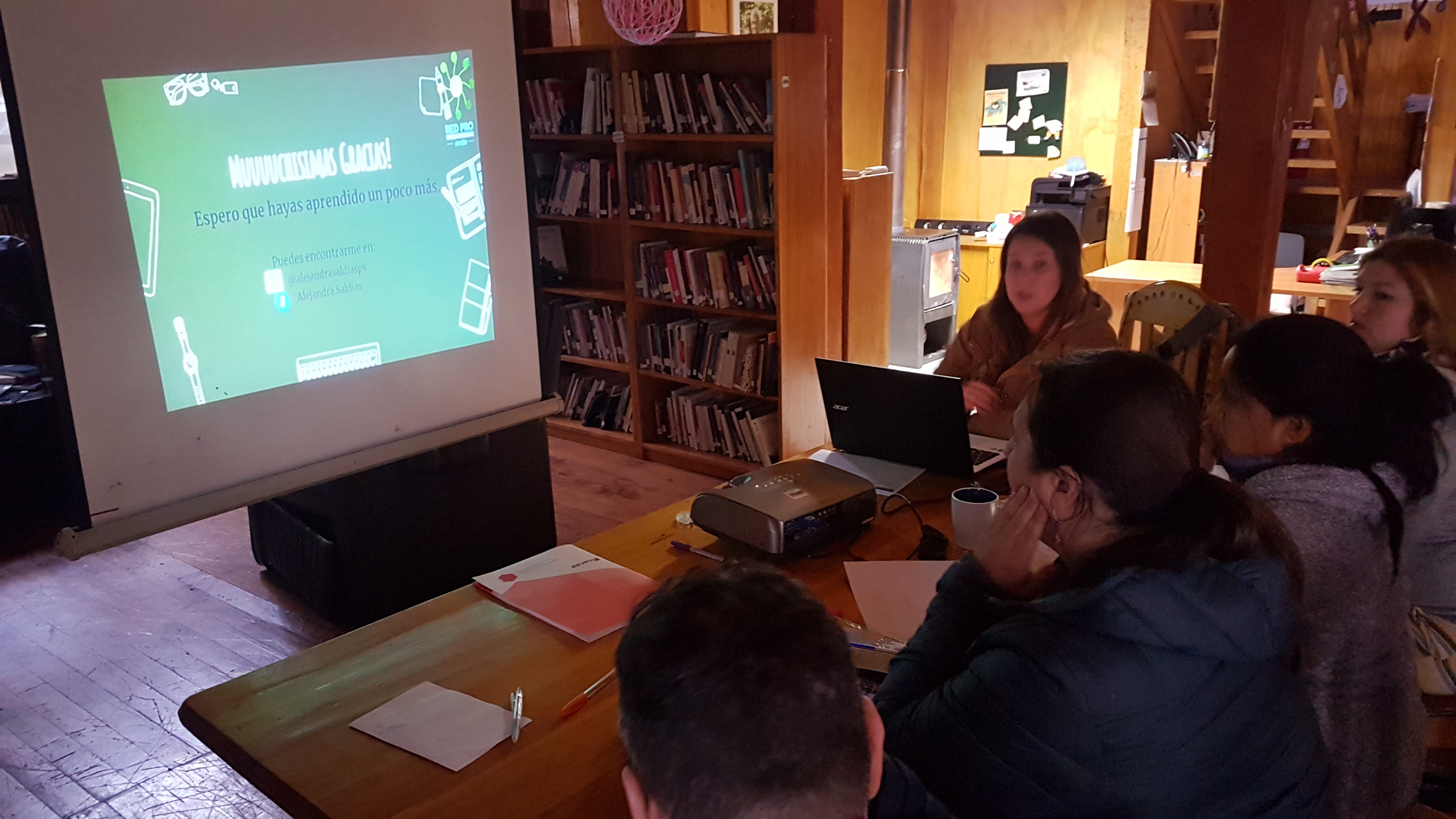
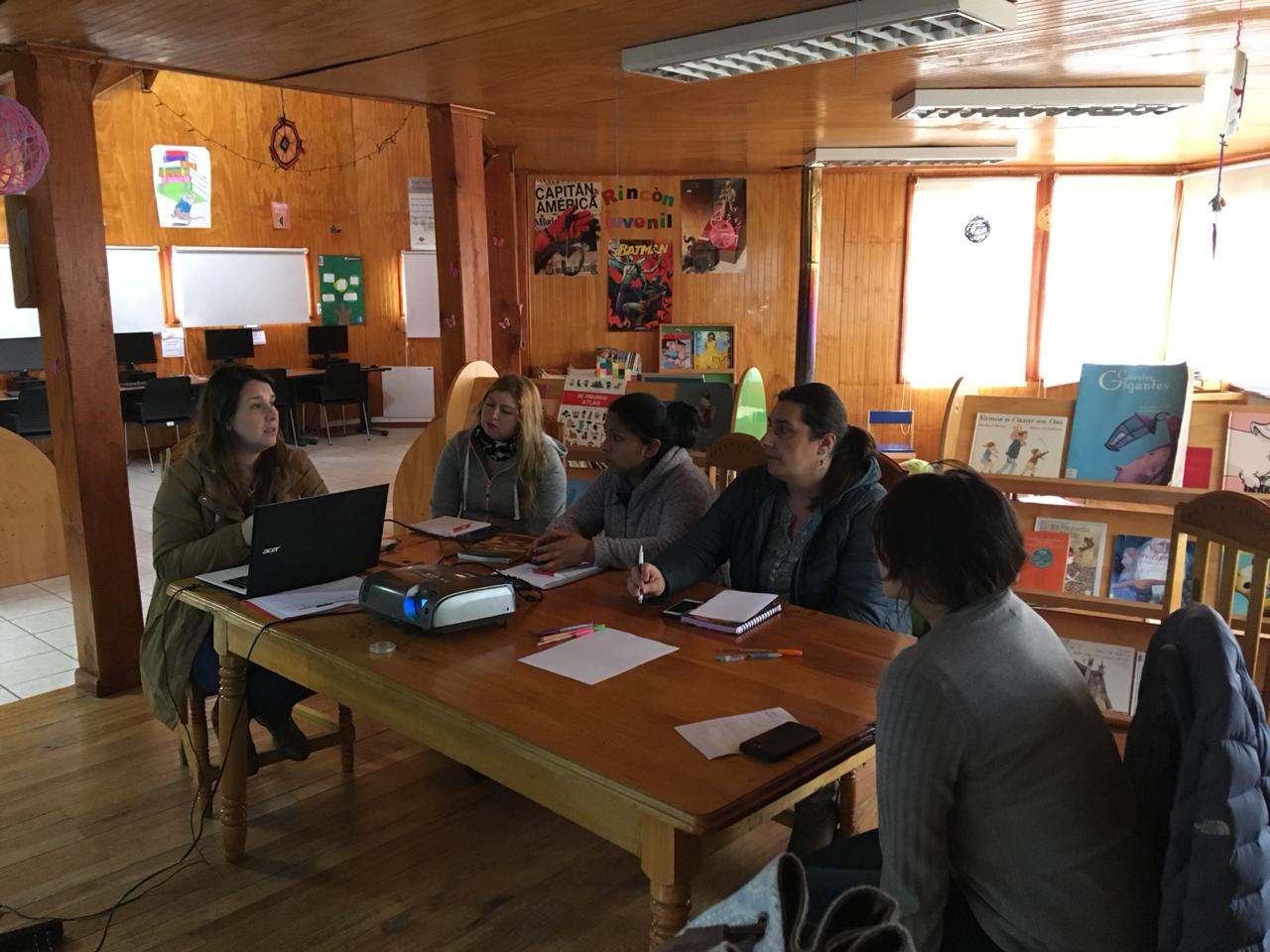
1st Workshop about digital literacy and social media - REDPRO INACAP
On March, 6th of 2020, Alejandra Saldías was the monitor in charge of developing this workshop , which objective was to help people who are starting a bussiness to use and take more advantage of the social media, as facebook or instagram. This way, people can promote their jobs and make themselves known on the virtual world.
Within the topics revewed, we can mention the creation of a Facebook fanpage , how to create a more attractive post in order to call clients’ attention, which pictures they can use on their posts and how, the importance of a profile and banner pictures, among other very interesting tips.
We want to thank Inacap and its project REDPRO, to facilitate Alejandra’s trip to Villa O’Higgins.
Micro Forest Workshop - Prototipo de Laboratorio Abierto de Ciencias Subantárticas, Universidad de Magallanes 2nd Visit
Once again Laura’s team from Prototipo de Laboratorio Abierto de Ciencias Subantárticas visit Villa O’Higgins. In this opportunity they will talk about the microforest.
The first day, the team compund by Laura Sanchez, Lorna Moldenhauer, Jorge Soza, Susana Millan, Adriana Barrientos y Diego Vargas, visited Parque Glaciar Mosco in order to identify natural and unnatural landscapes, processes of colonization y variety of funga, lichens and moss.
The second day, the team took some students from Liceo Pioneros del Sur to Mirador del Valle trail. There, Laura and her team introduced the species that compose the microforest. In the trail, they also could find natural landscapes (the ones that are not changed by human intervention) of the artificial landscapes (such as Villa O’Higgins and the or trail improvements, as stairs or handrails). Also, it is mentioned that the process of colonization is not only a human action, since we can find this process in nature too (for instance, a moss colonising slowly a rock’s surface). In addition, students distinguished different types of fungi, lichens, moss and other vernacular flora . The next day, students made some biological index cards, according to the notes they took on the park. On the ther hand, both science teachers had an special afternoor, where they were given information about how to work these topics with the students on their regular clases.
In this visit, we also organized a three-days workshop open to the community. The objective of the first day was to learn about edible wild fungi that we can find in the near places and the recipes for cooking these mushrooms (cooking fungi is viewed as sustainable product to develop) . The second day the participants went to Miradores Urbanos Trail in Parque Glaciar Mosco, where they could identifiy natural and artificial landscapes and see how they interact, Also, the participants were recognizing some vernacular and non vernacular species, taking pictures and registering them on an index. On the third day, the participants gathered on the Centro de Eventos Municipal, to share the information about the species they collected the day before.
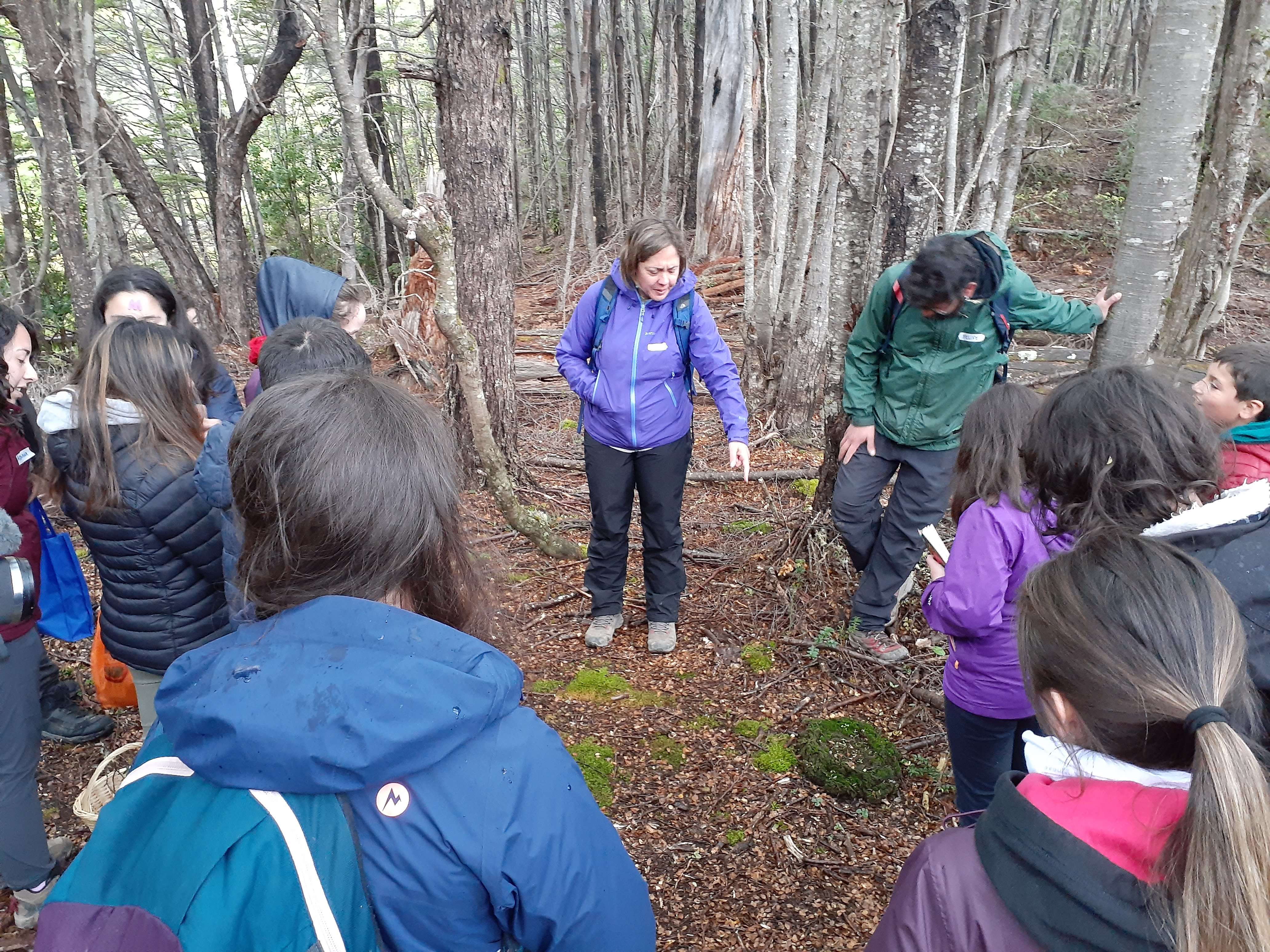
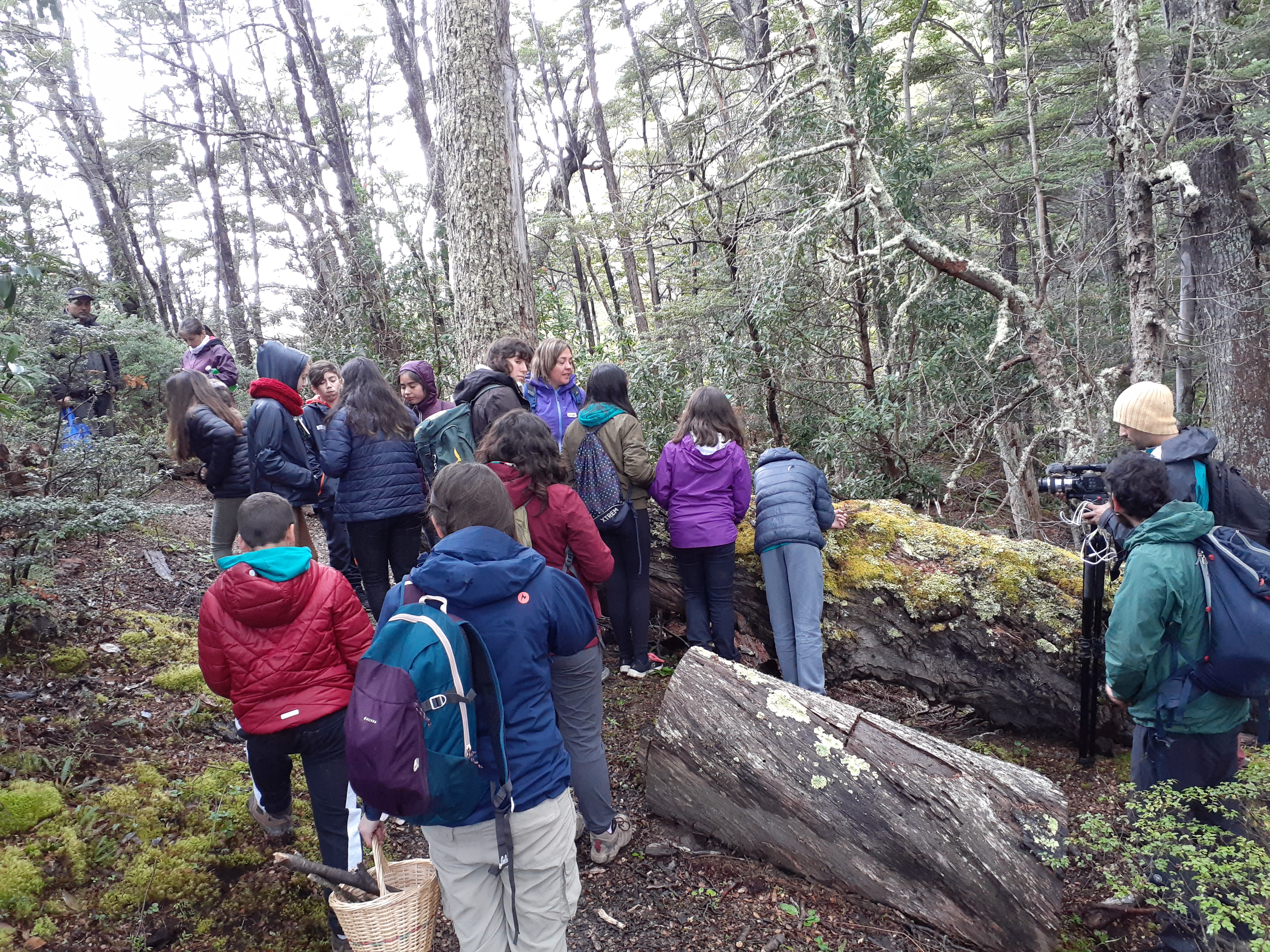

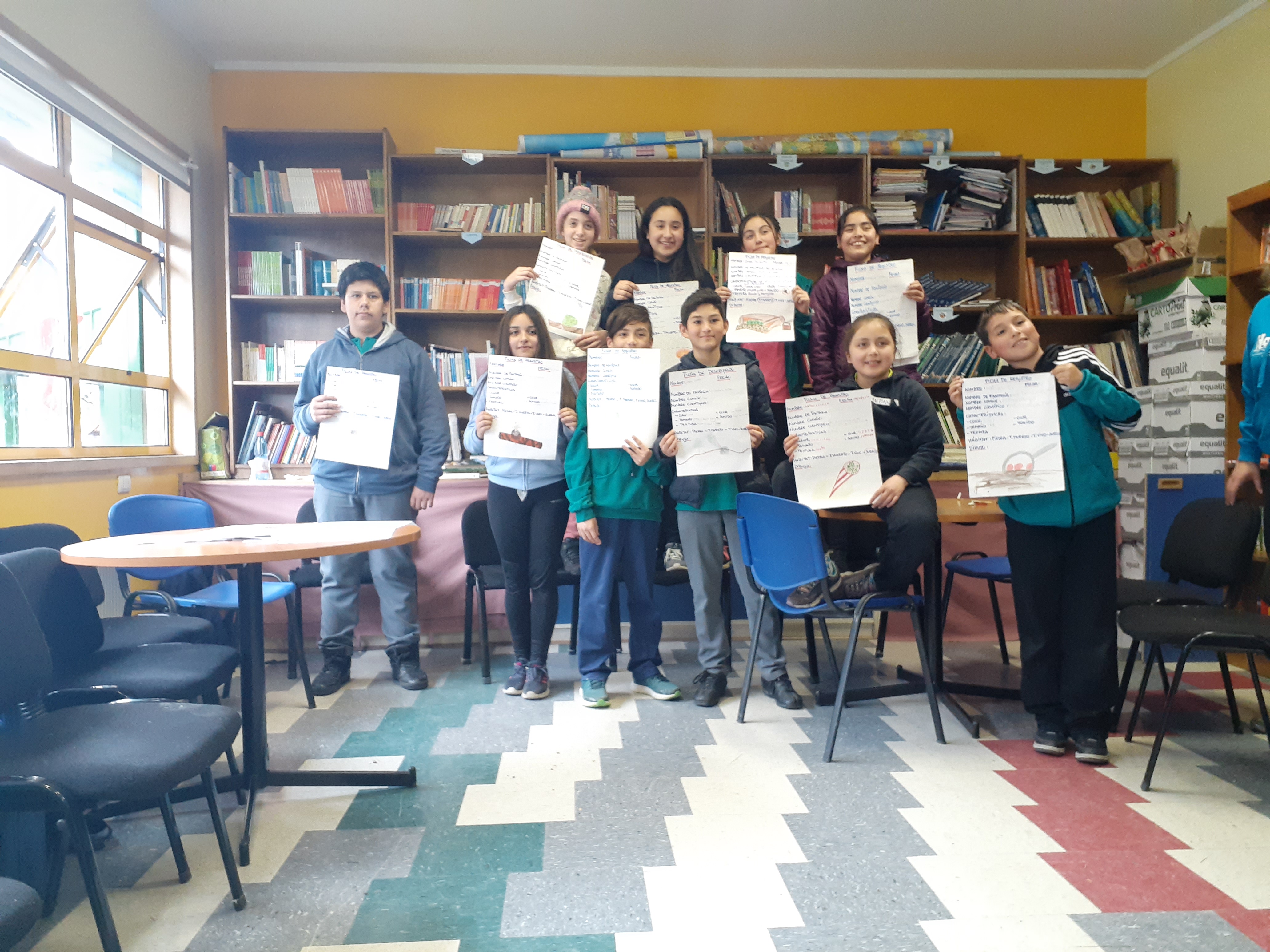
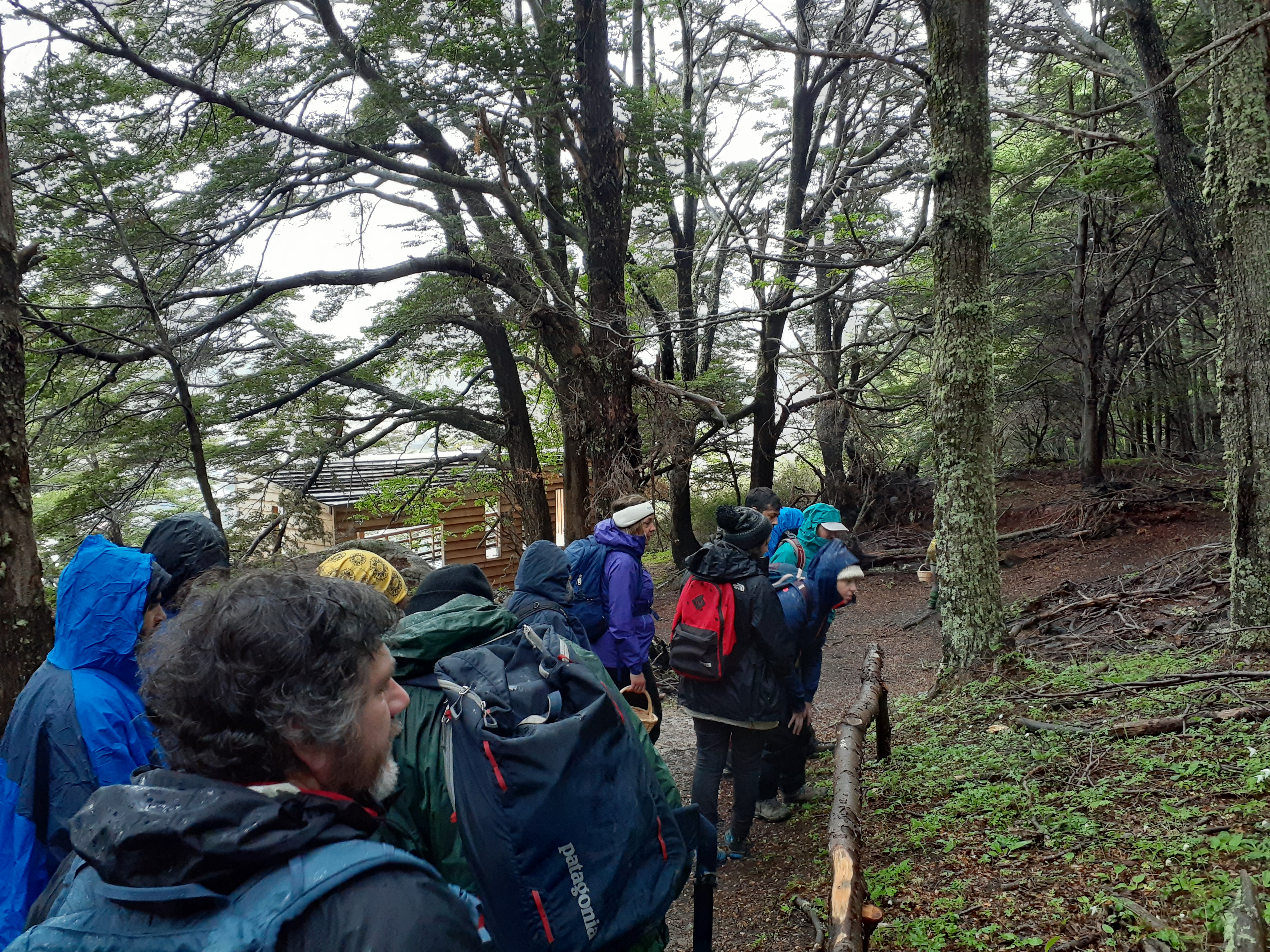
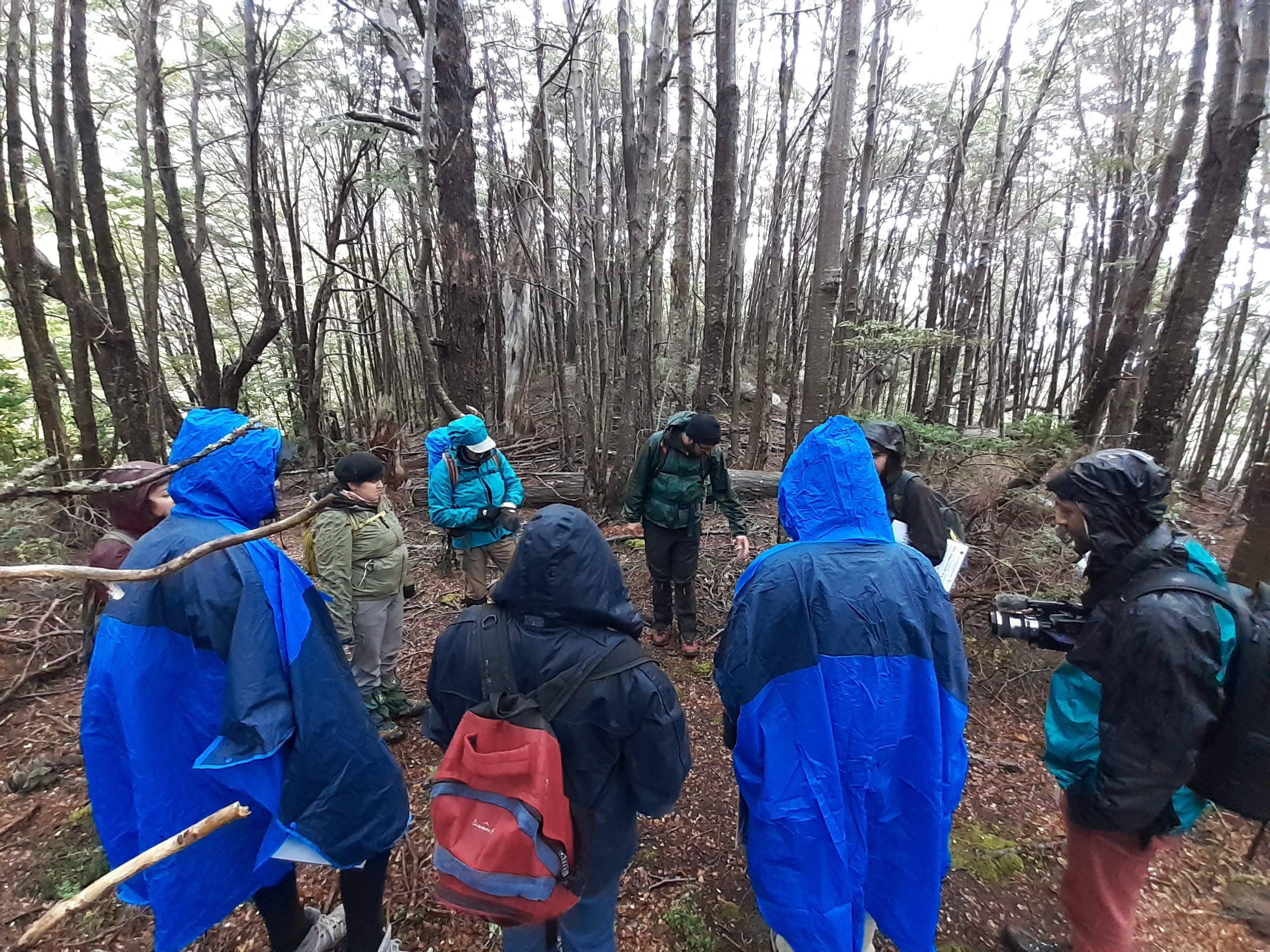

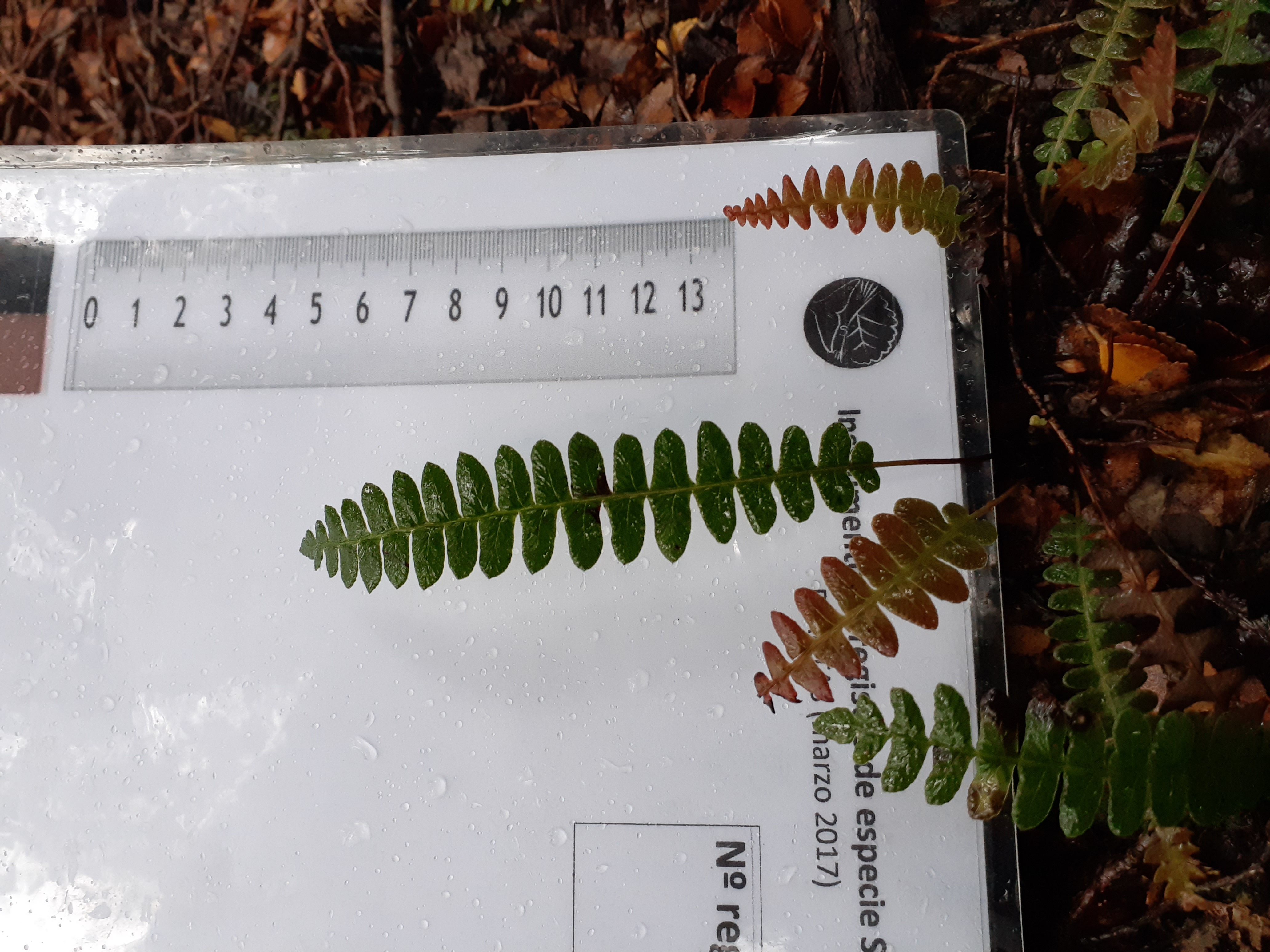
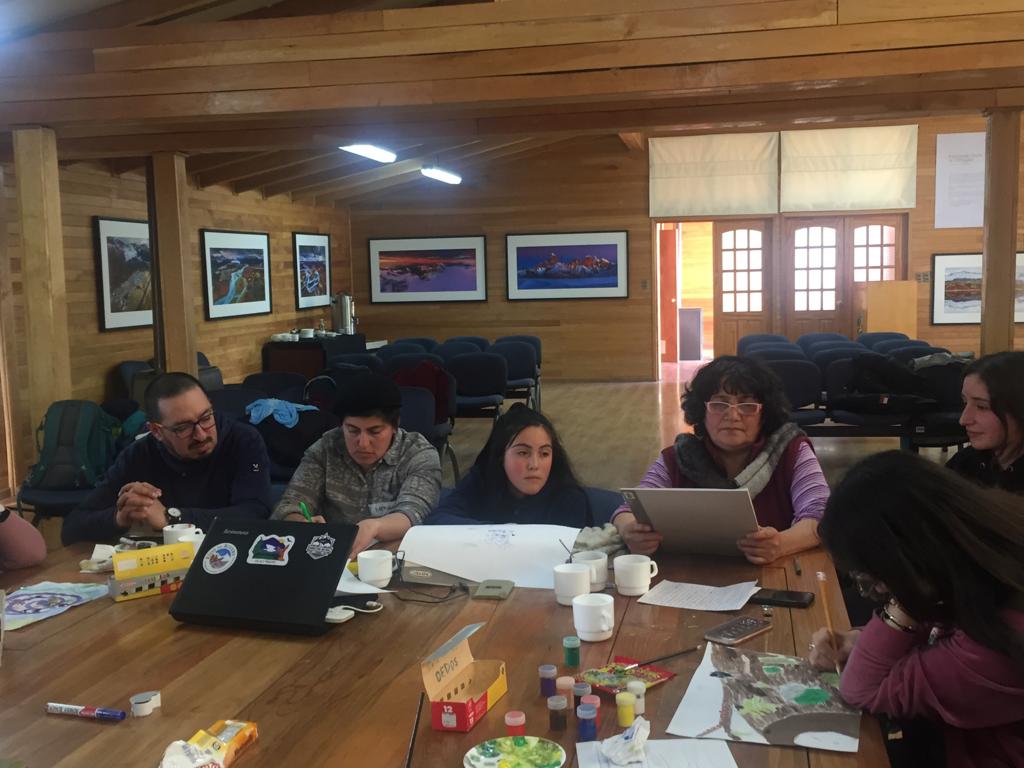
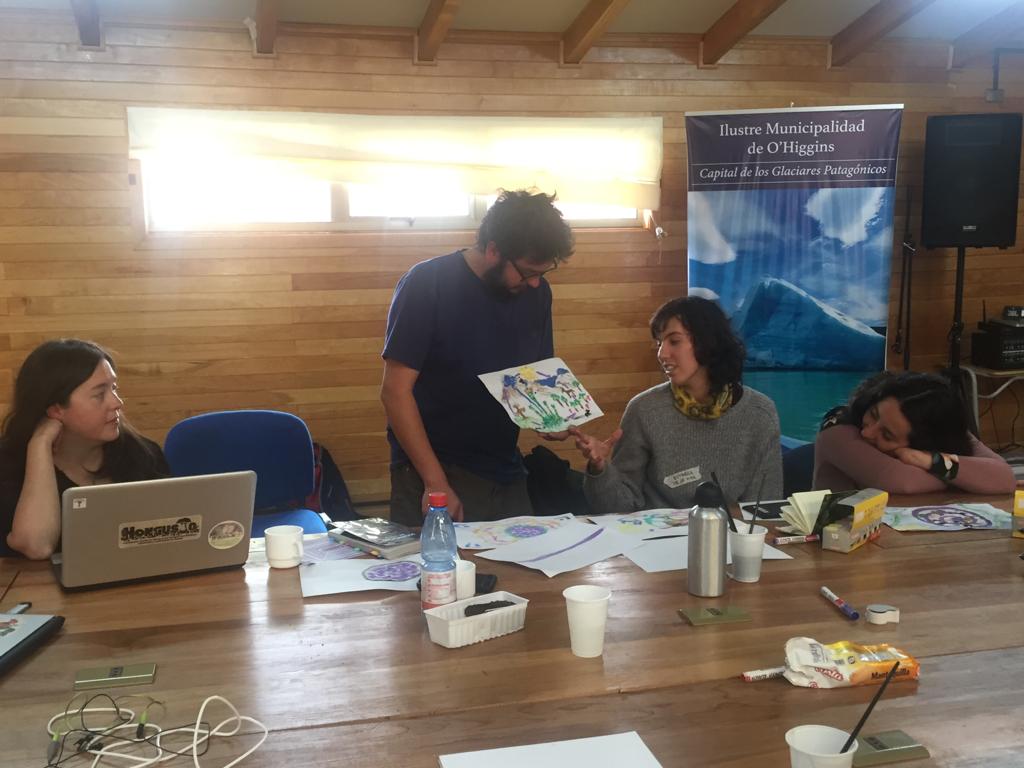



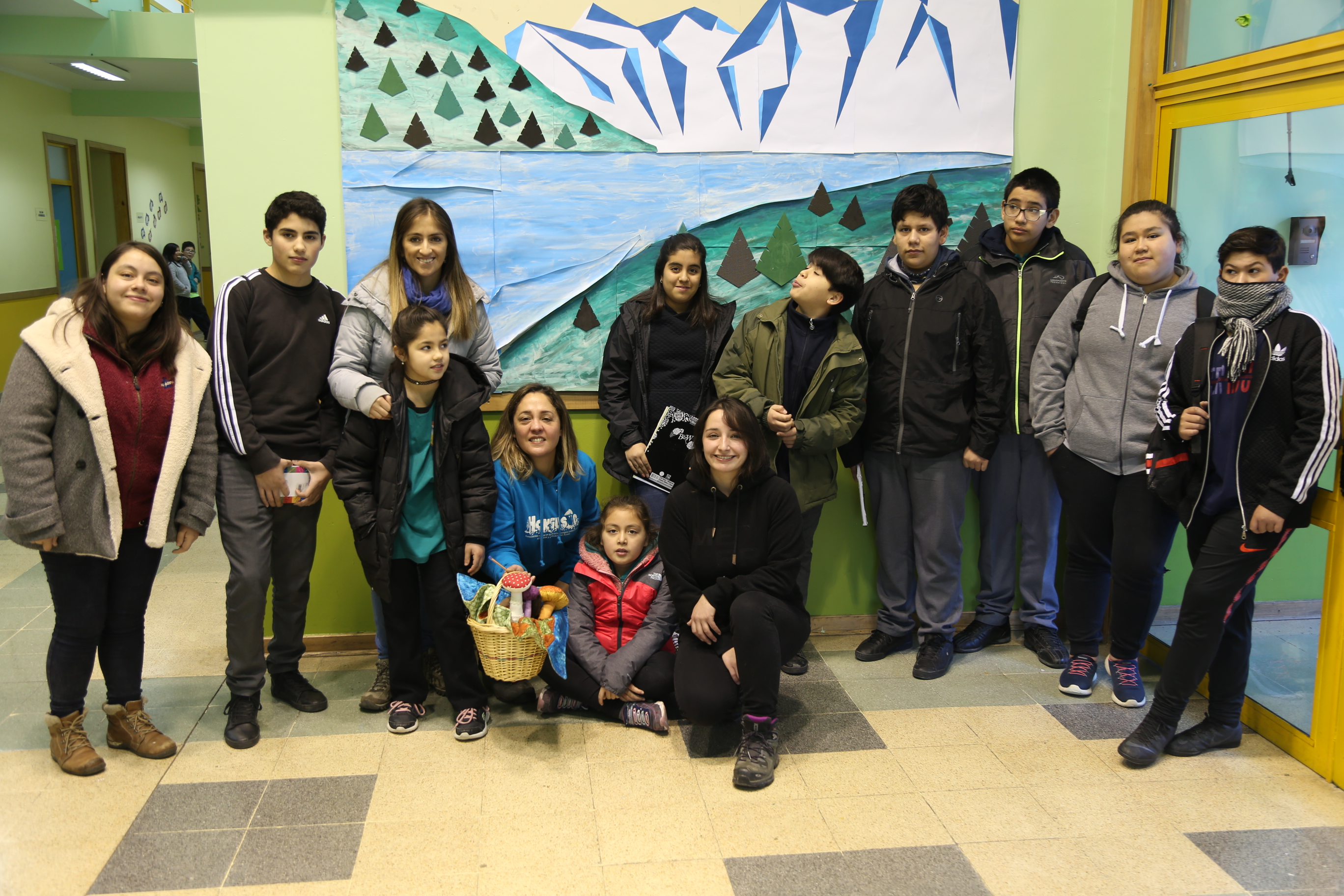
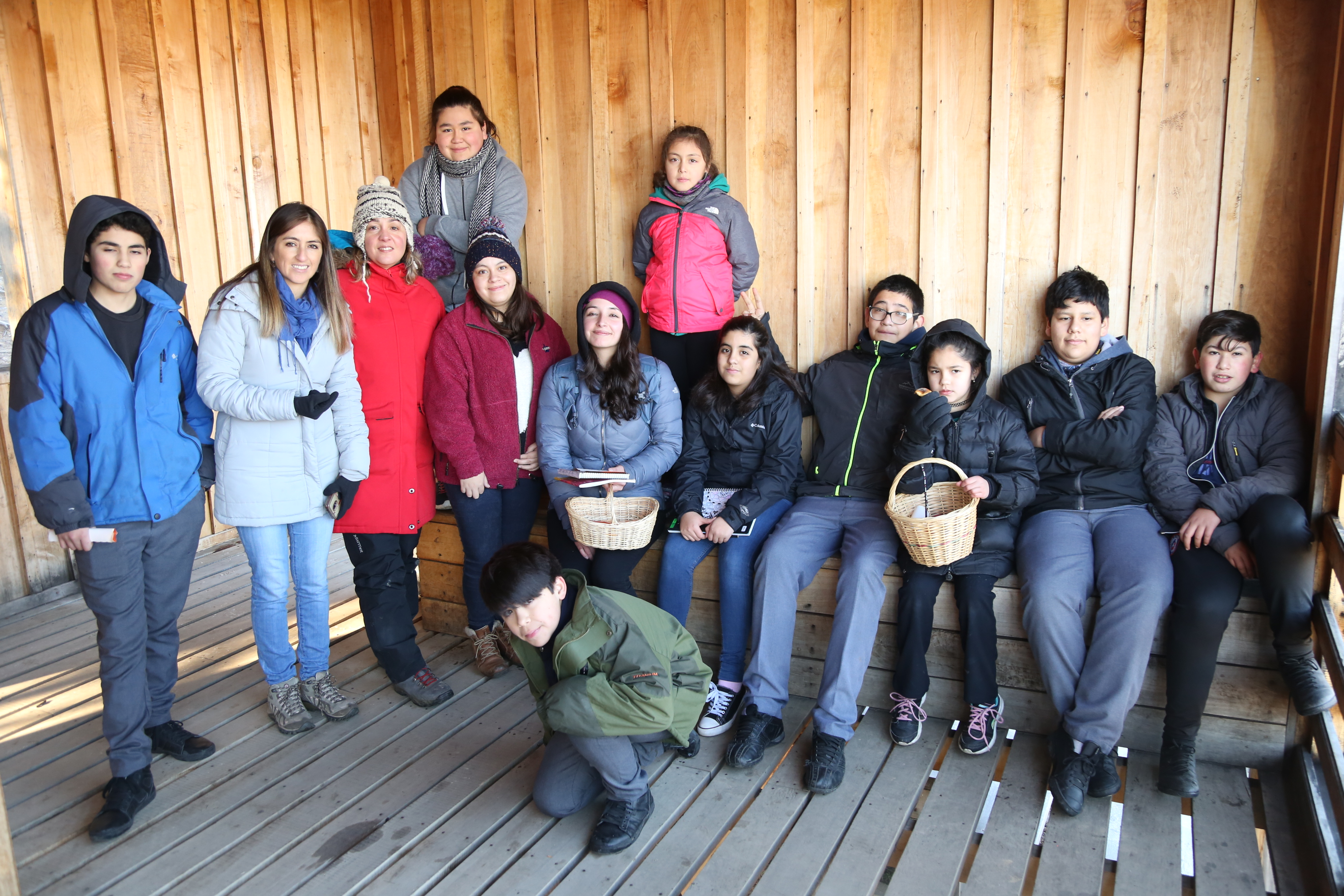
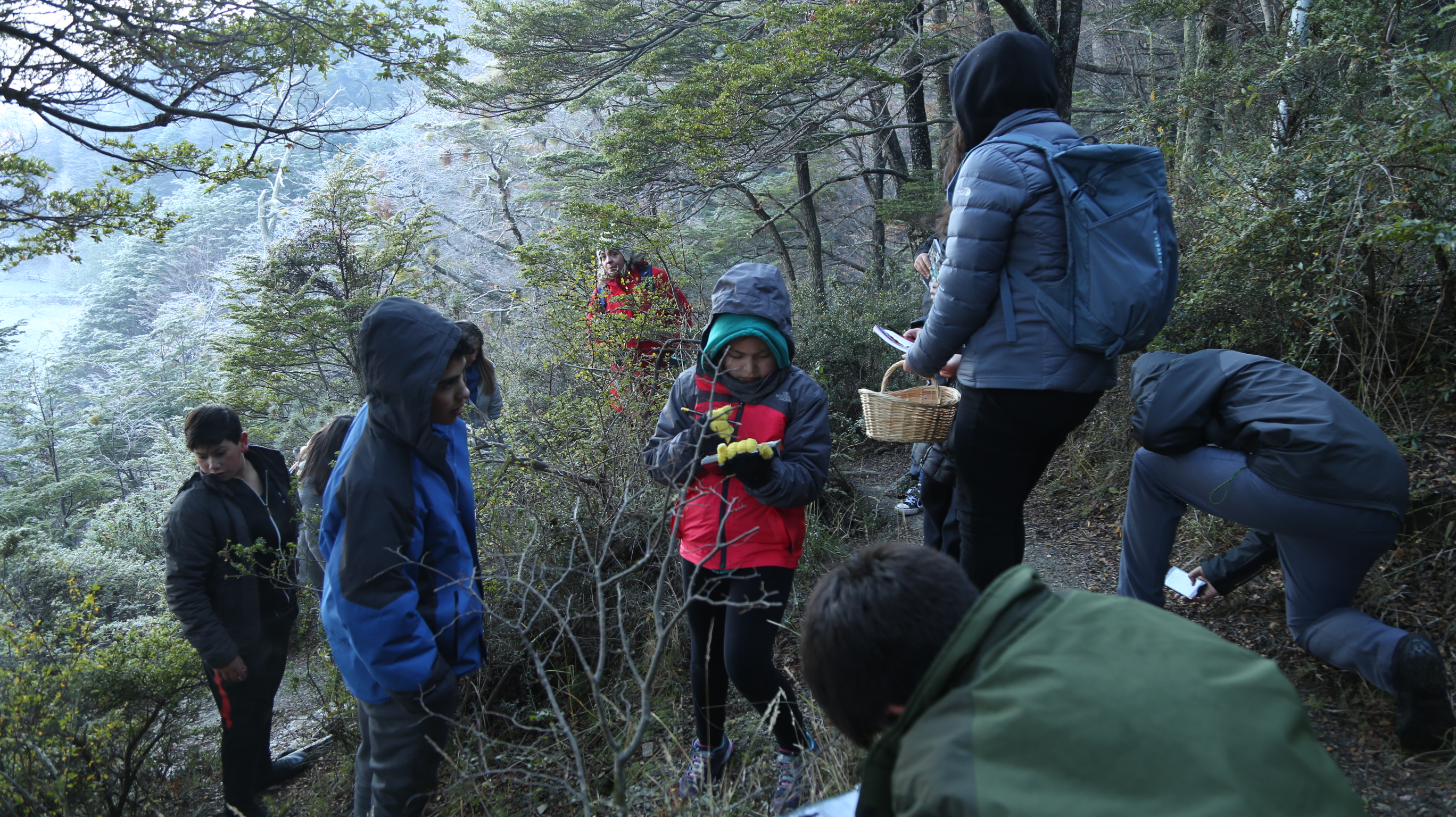
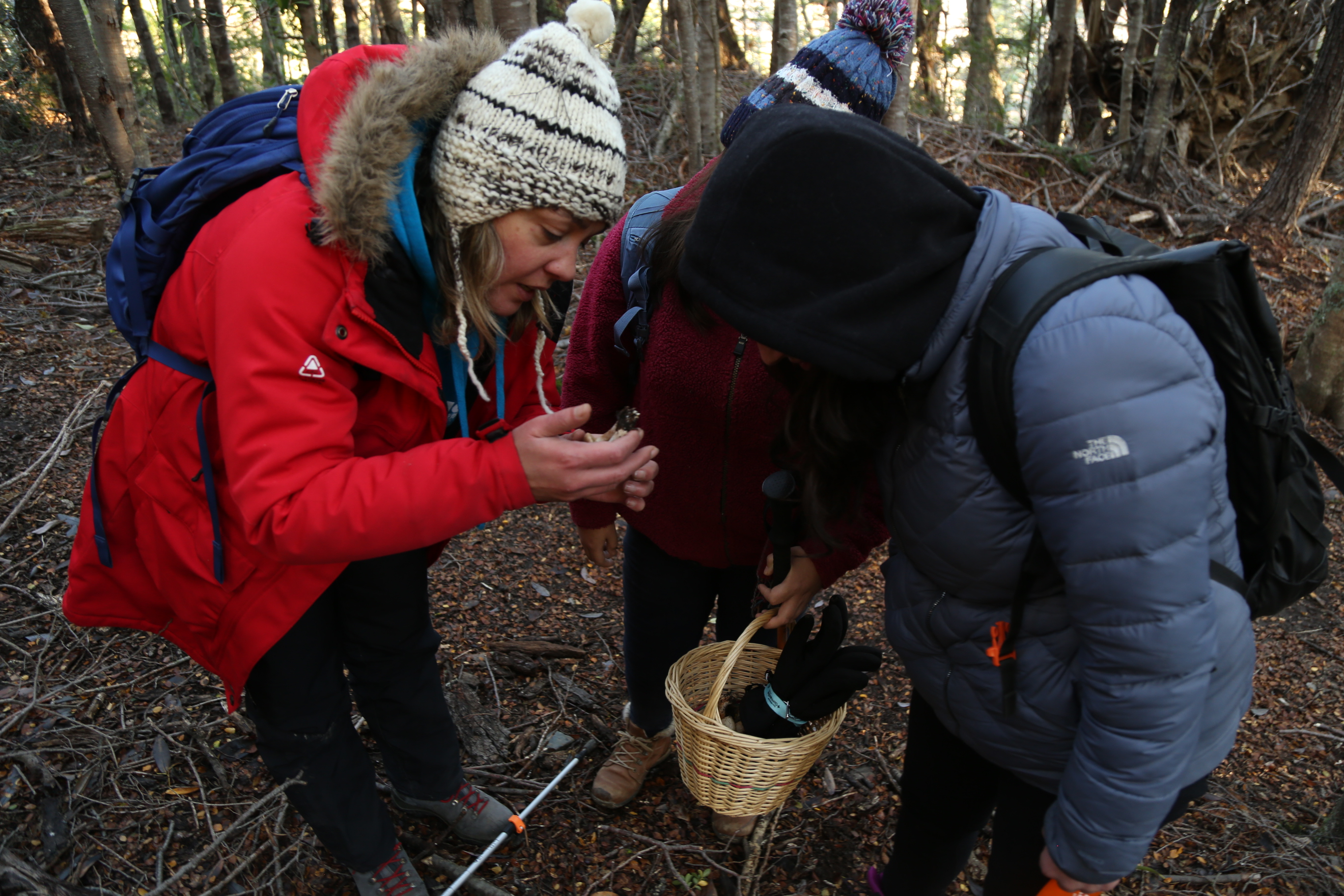

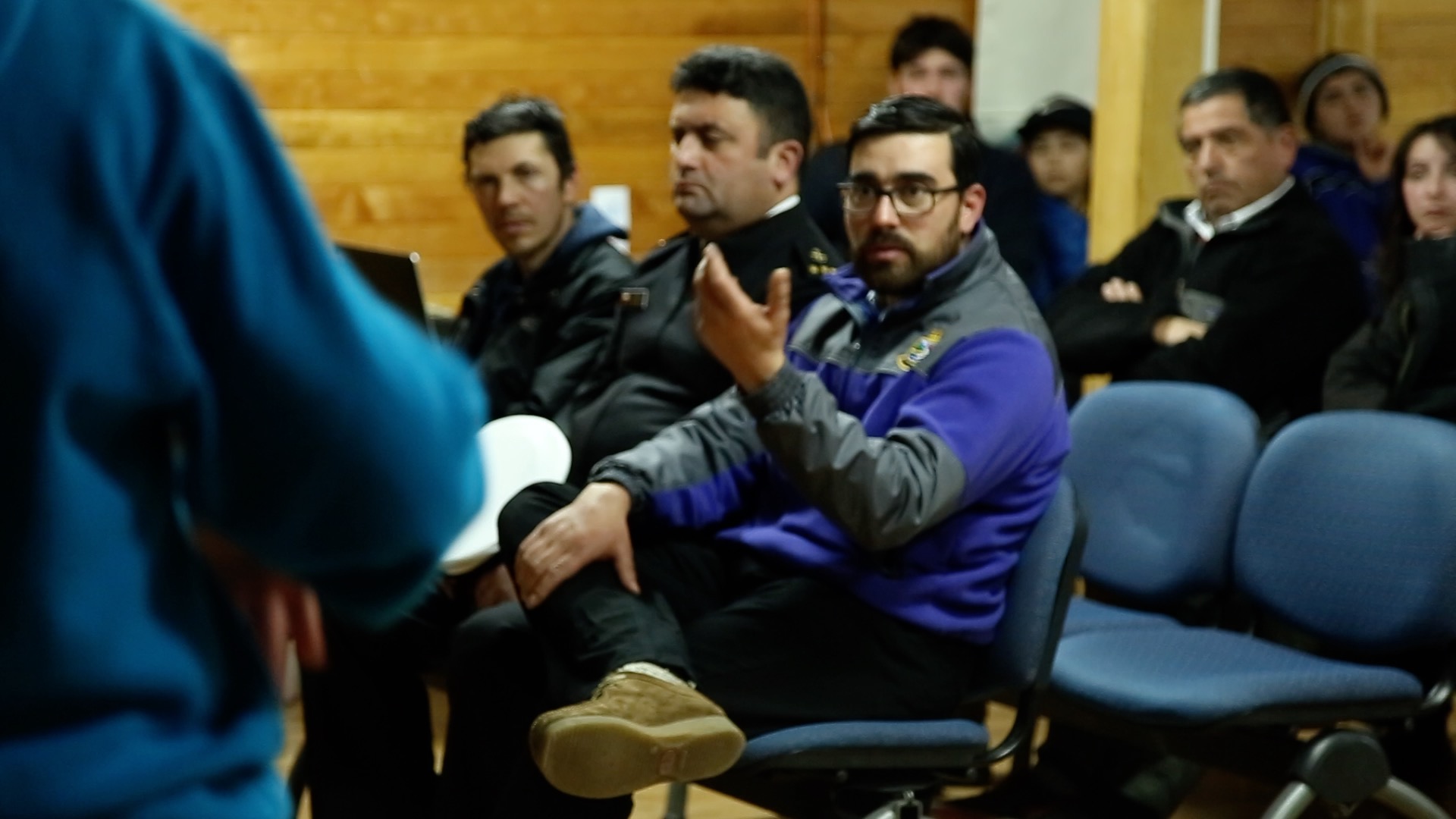
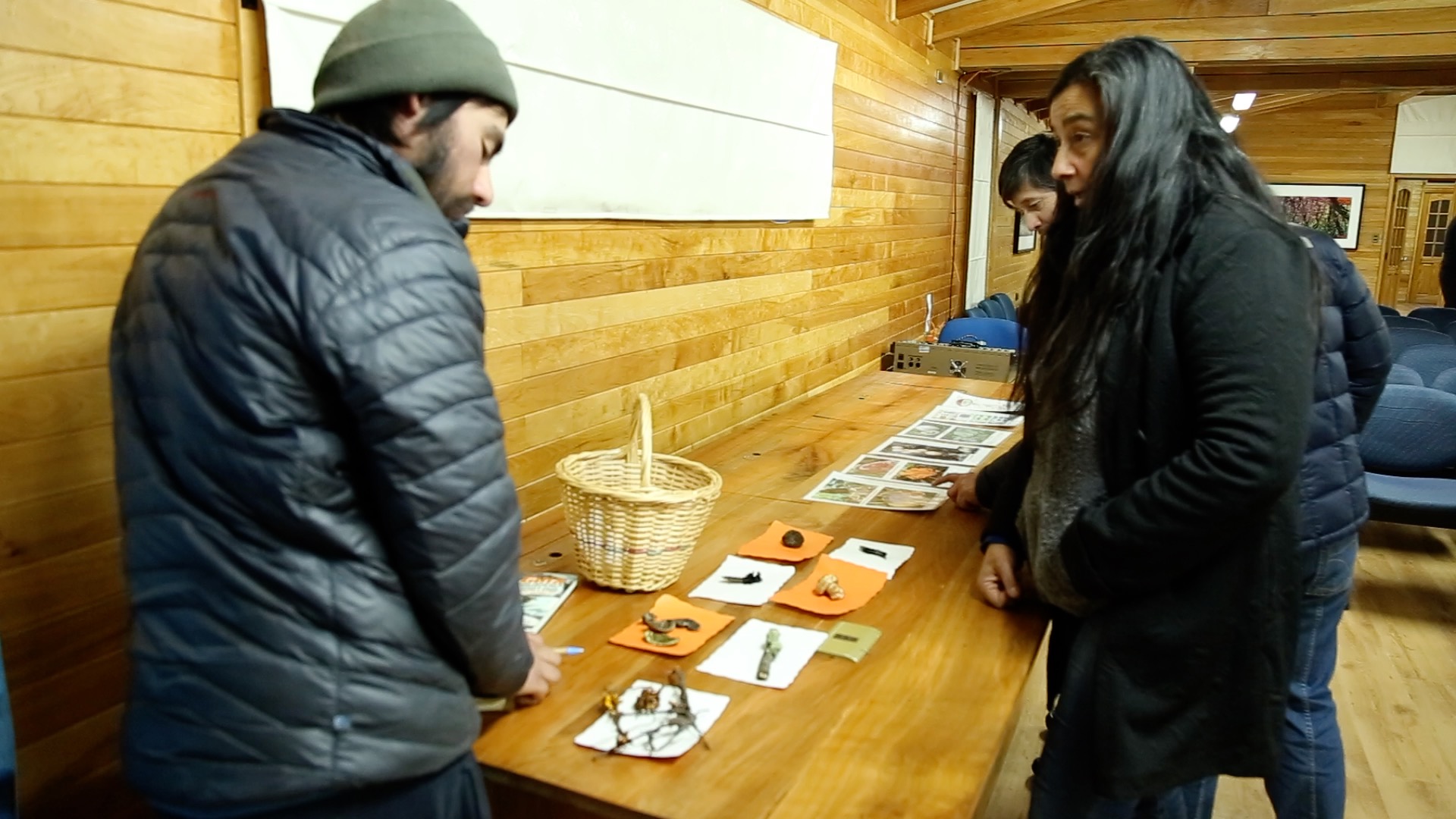
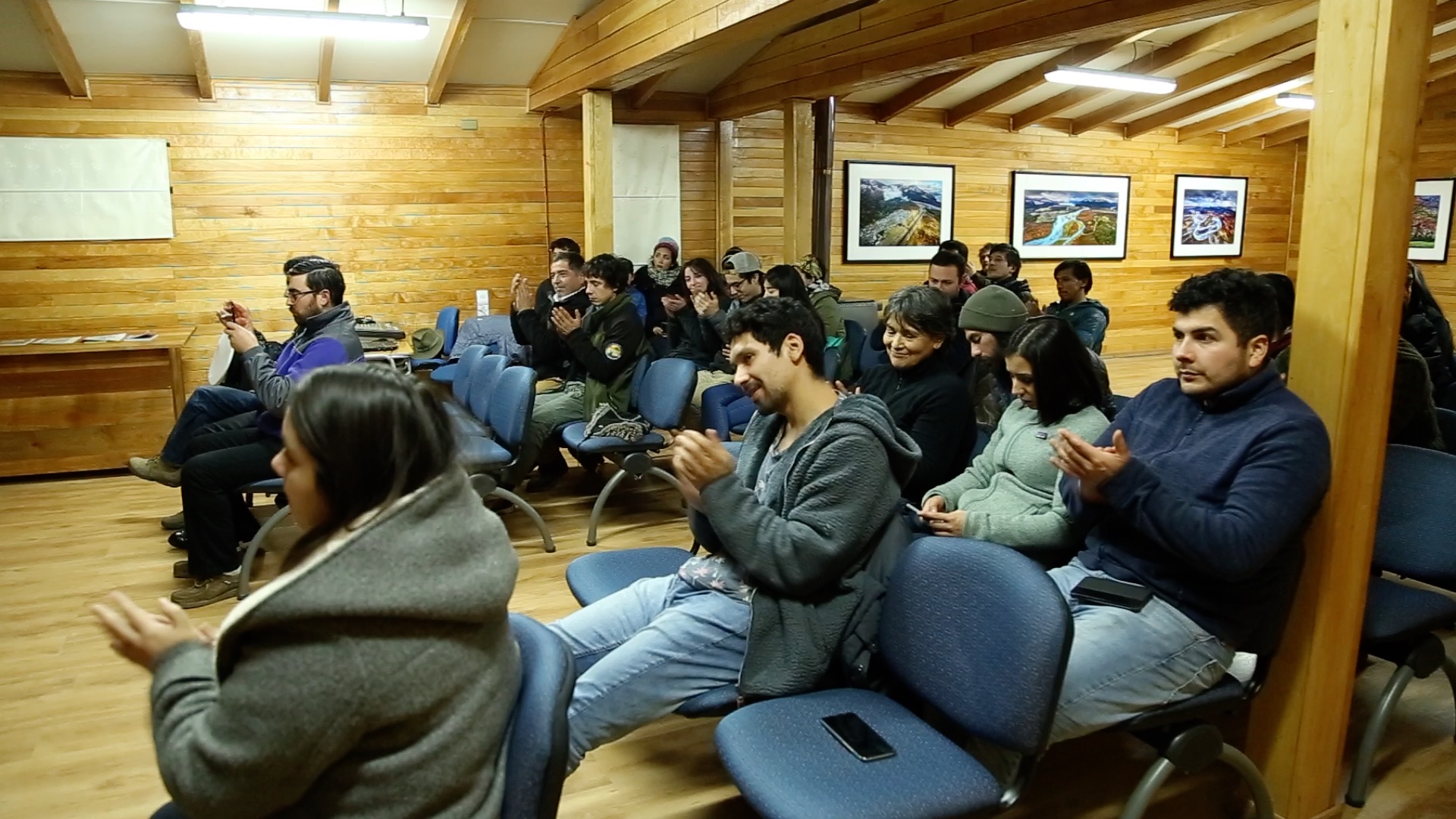
Macro Fungii Workshop - Prototipo de Laboratorio Abierto de Ciencias Subantárticas, Universidad de Magallanes
During the last week of May 2019, Laura Sanchez Jardón and her team: Arturo Clark y Javiera Alvarez from this Laboratorio Abierto de Ciencias Subantárticas de la Universidad de Magallanes (centro de Estudios de Coyhaique) visit us for the first time, with the objective of working with the Highschool Science Group and the local community.
On May 30th and 31st, in those mornings, Laura and her team gave a brief exposition about the fungii kingdom, their biological characteristics and the role they have in the ecosystems as the main organic material decomposer, to the school students ( from 4th grade of primary, to the 2nd grade of highschool). And in those afternoons, the students were taken to Parque Glaciar Mosco, where they found fresh examples. The alumni studied these species, mentioning the parts of their structure and analyzing their different shape, size and colours. That information was registered on a small notebook, along with the type of substratum.
In the evening of may 31th, Laura and her team made a workshop for the whole Villa O’Higgins community. We had the presence of local authorities, people related to the tourism market, hand crafting, restaurants and general audience. In this opportunity, Laura gave a general introduction (since this was her first visit in Villa O’Higgins) about the fungi kingdom; their biological characteristics and their role in the ecosystems. Also some samples of fungi found in Parque Glaciar Mosco were shown, so the audience had the change to see them.
We want to give our appreciations to Ilustre Municipalidad de O’Higgins, Liceo Pioneros del Sur and Prototipo de Laboratorio Abierto de Ciencias Subantárticas del Centro Universitario de la Universidad de Magallanes for sharing their knlowledge.
First Seminar about Biodiversity Awareness and Valorization
On march 22nd and 23rd of 2019, the first version of the Biodiversity Awareness and Valorization Seminar took place in Villa O’Higgins.
The main objective was to show our students from the local school, teachers, tourism operators and the whole interested community the importance of nature protection, through presentations and workshops.
The seminar started with some word from the Mayor; Roberto Recabal Cárcamo, and Parque Glaciar Mosco’s administrator; Verónica Alvarez. Then we had the presentation of a 1st grade of highschool, which was focused on basic concepts about biodiversity; native, endemic, introduced and invading species, giving some examples with some external flora and fauna which is present en Villa O’Higgins. After that, Fernando Vidal (from Fundación Huilo Huilo) exposed about a project for Huemul breeding developed in Huilo Huilo. To conclude that morning, the Descubriendo team (Jorge Molina and Dinelly Soto) talked about the Leave No Trace principles and edible mushroom in Aysén Region. During the afternoon, Jorge and Dinelly took the assistants to the park in order to identify some bird, flora, funga and invertebrates in sweet water.
On march 23rd, in the morning, Guillermo Díaz, from Servicio Agricola y Ganadero (SAG, Coyhaique) who talks about some general characteristics of huemul, their reproductive cicle, change of fur, its habitat and the actions that people can do to protect its home. That seminar afternoons is continued by Juan Carlos Alvarez, from Corporación Nacional Forestal (CONAF) who exposed about the protection of the native forest and the consequences of its destruction. In addition, José Manuel Villegas y Francisco Doizi from Embajada Mundial de Activistas por la Paz (EMAP) showed their work with different people in various countries, which is related encouraging and teaching about recycling. To end the seminar, the assistants went to Liceo Pioneros del Sur, to be part of a workshop about soap making with recycled oil, which was led by the students of the Highschool science group and their teacher Blanca Diaz.
To end, we thank Gobierno Regional de Aysen for the funds to develop the project through its 0.3% FNDR for activities for environmental activities, the coleagues from Ilustre Municipalidad de O’Higgins and the exponents who shared their knowledge with us.


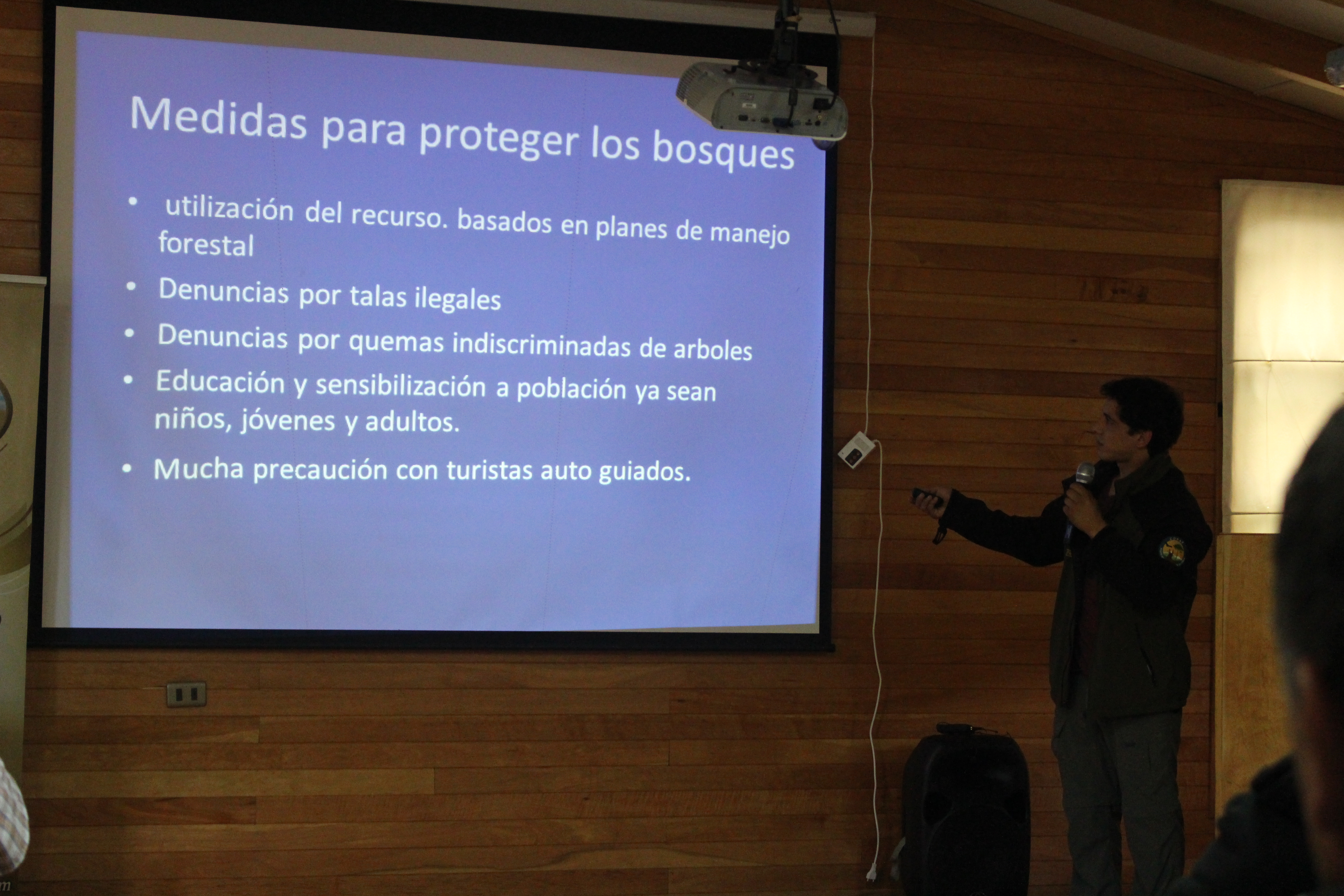
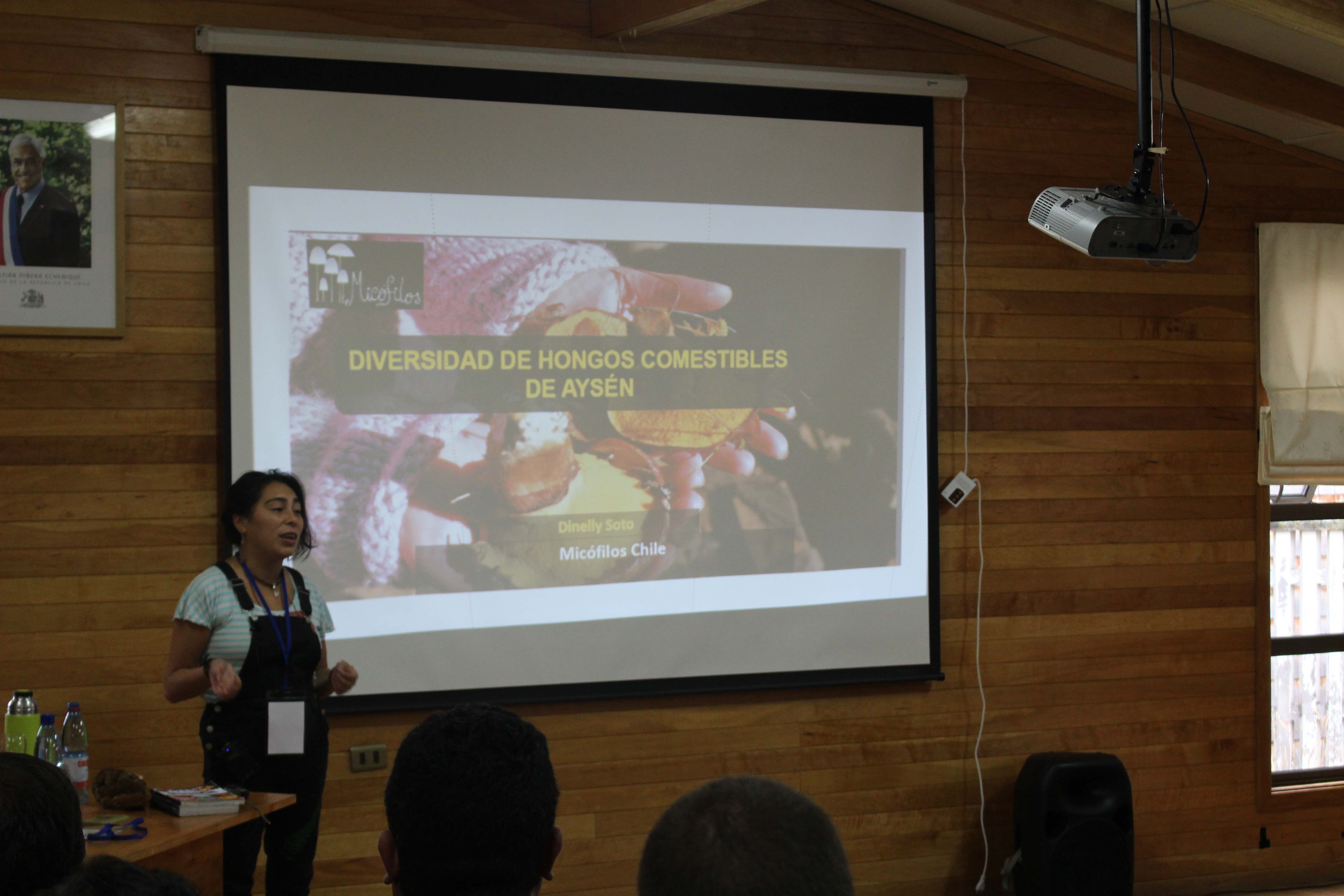


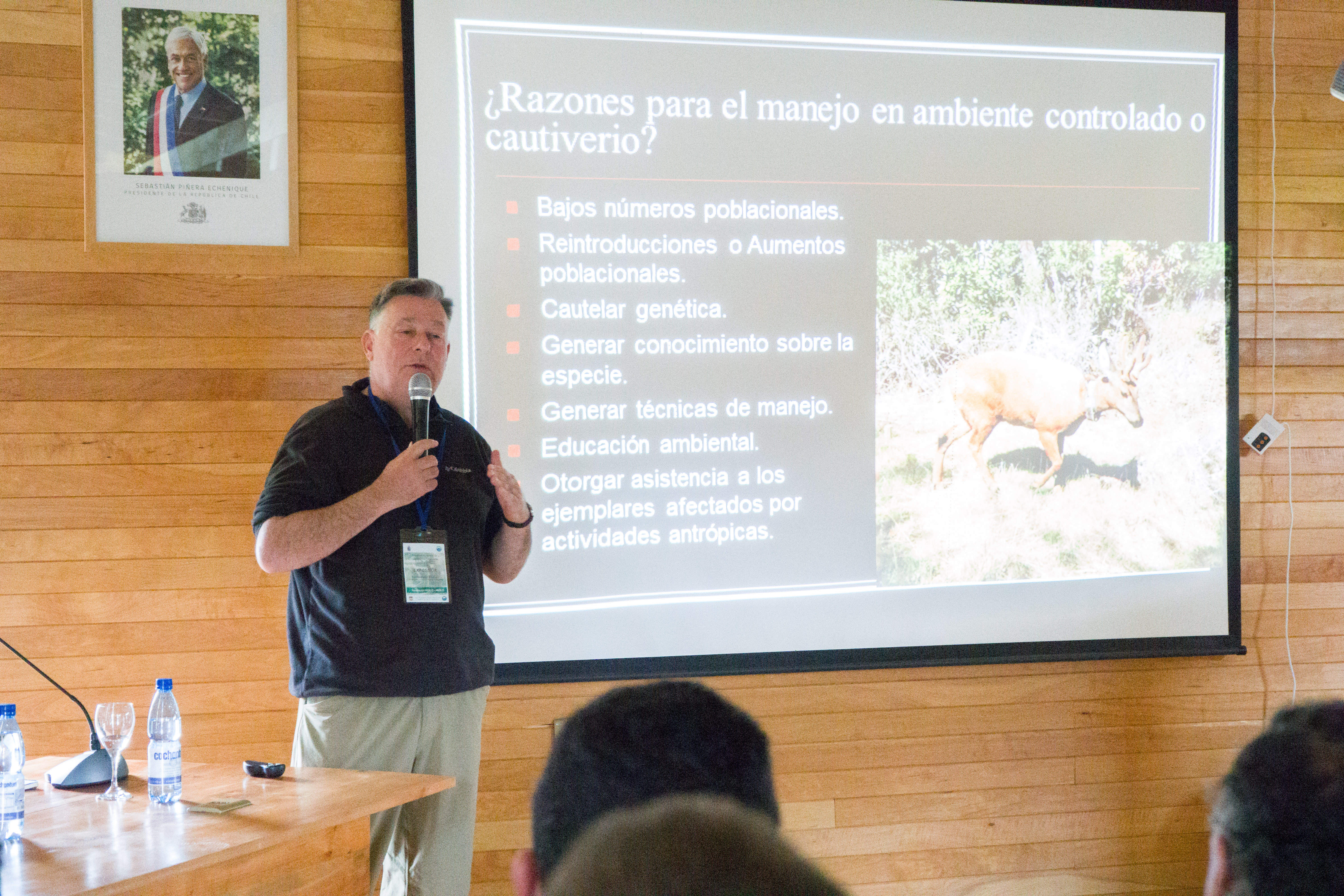


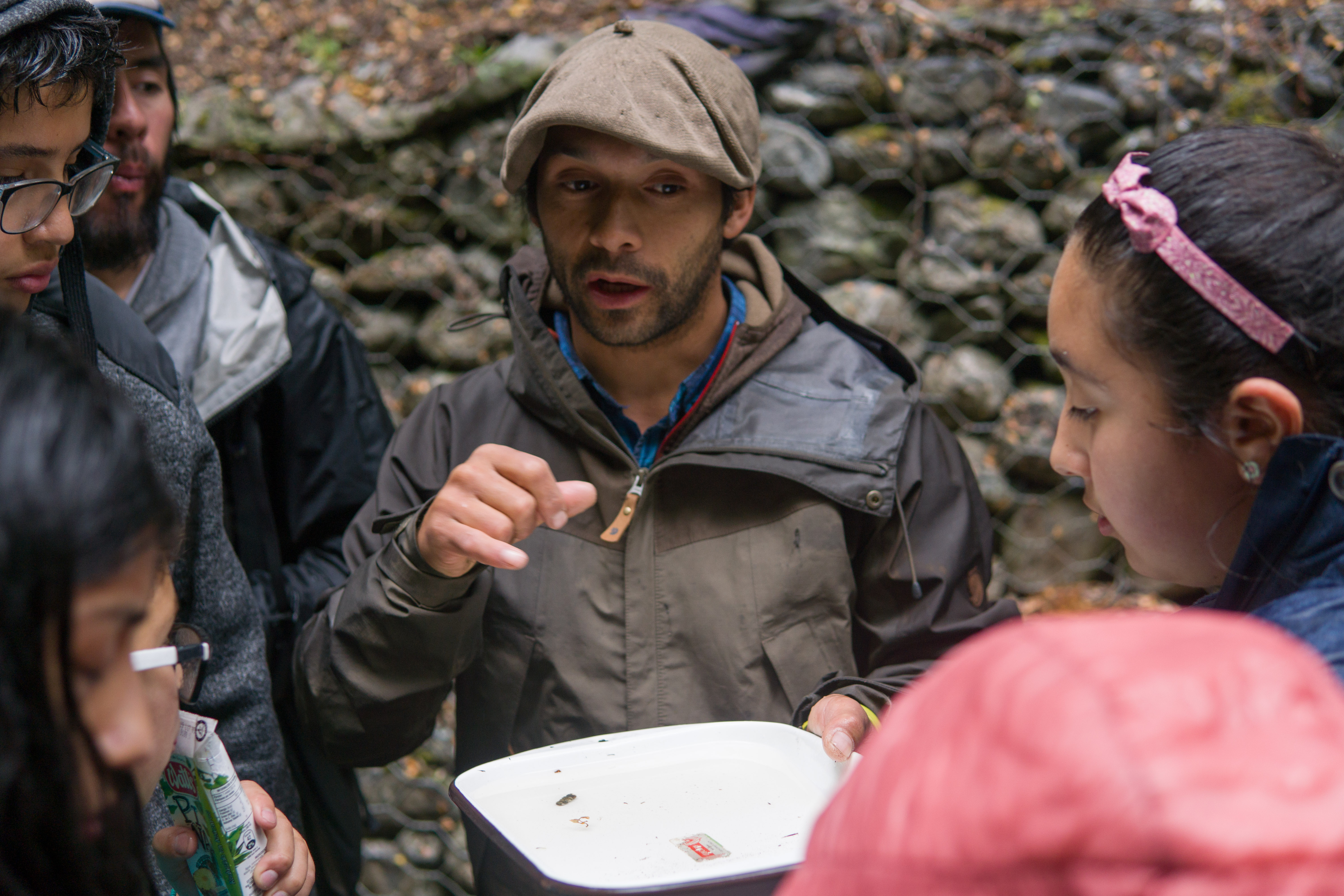
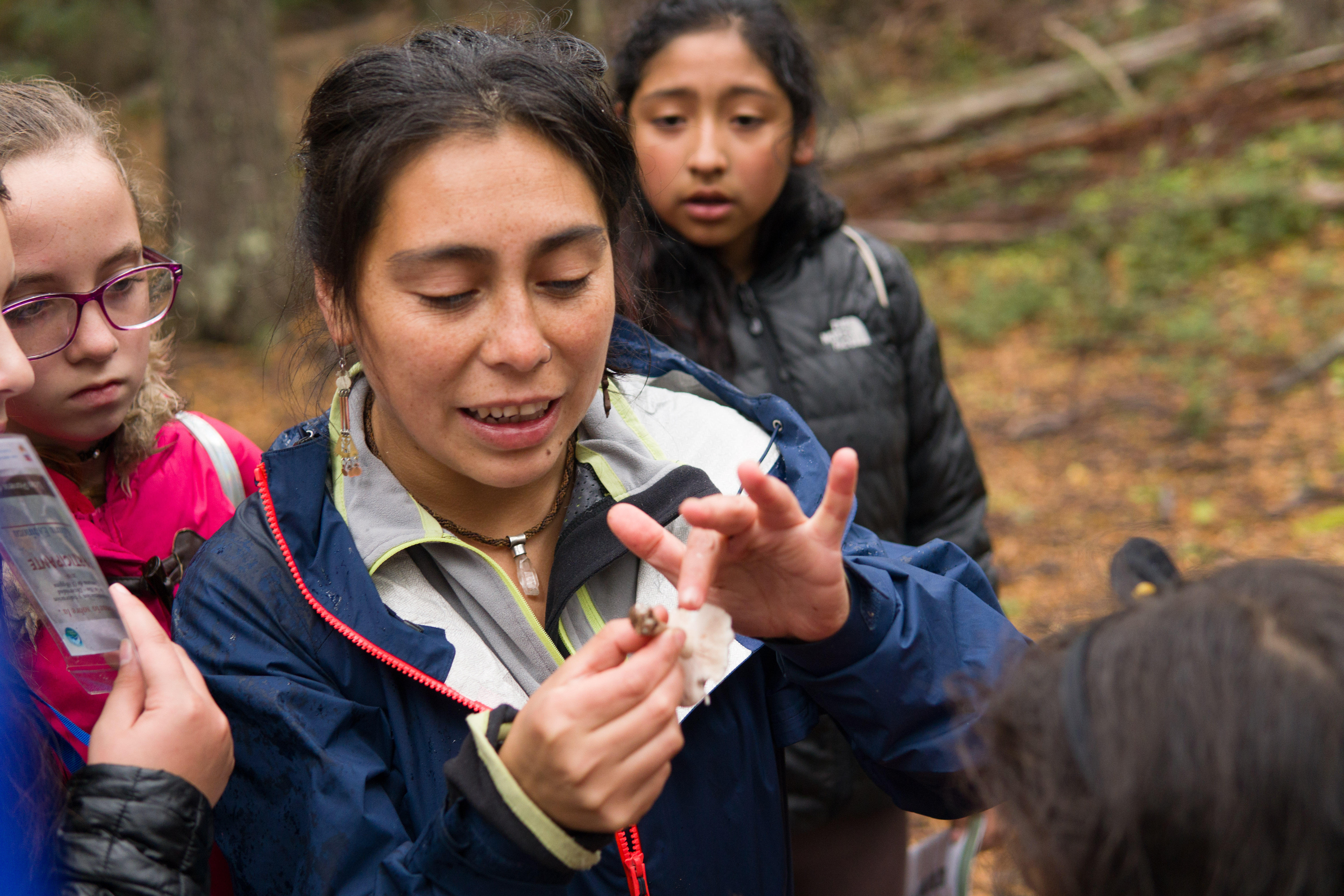



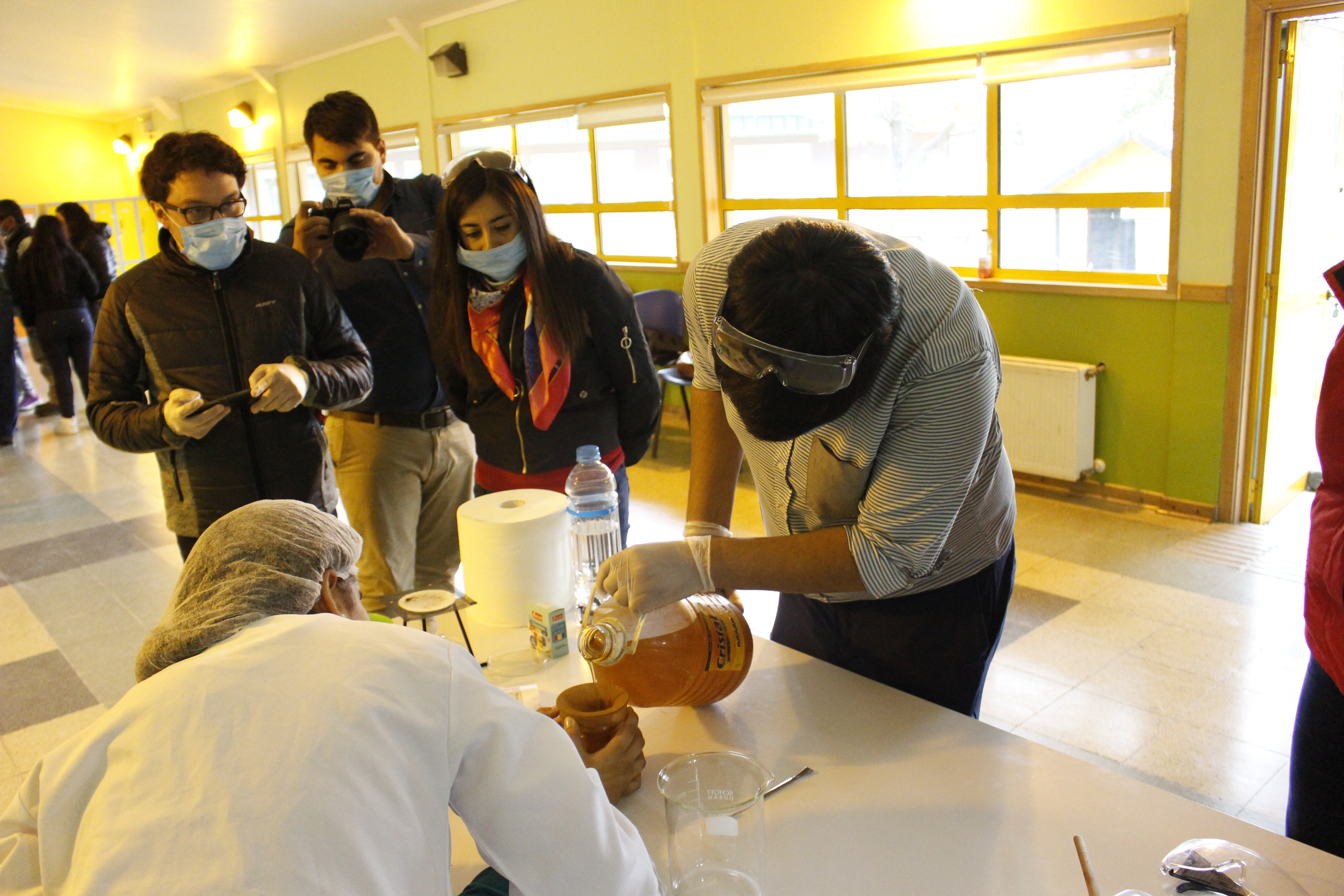
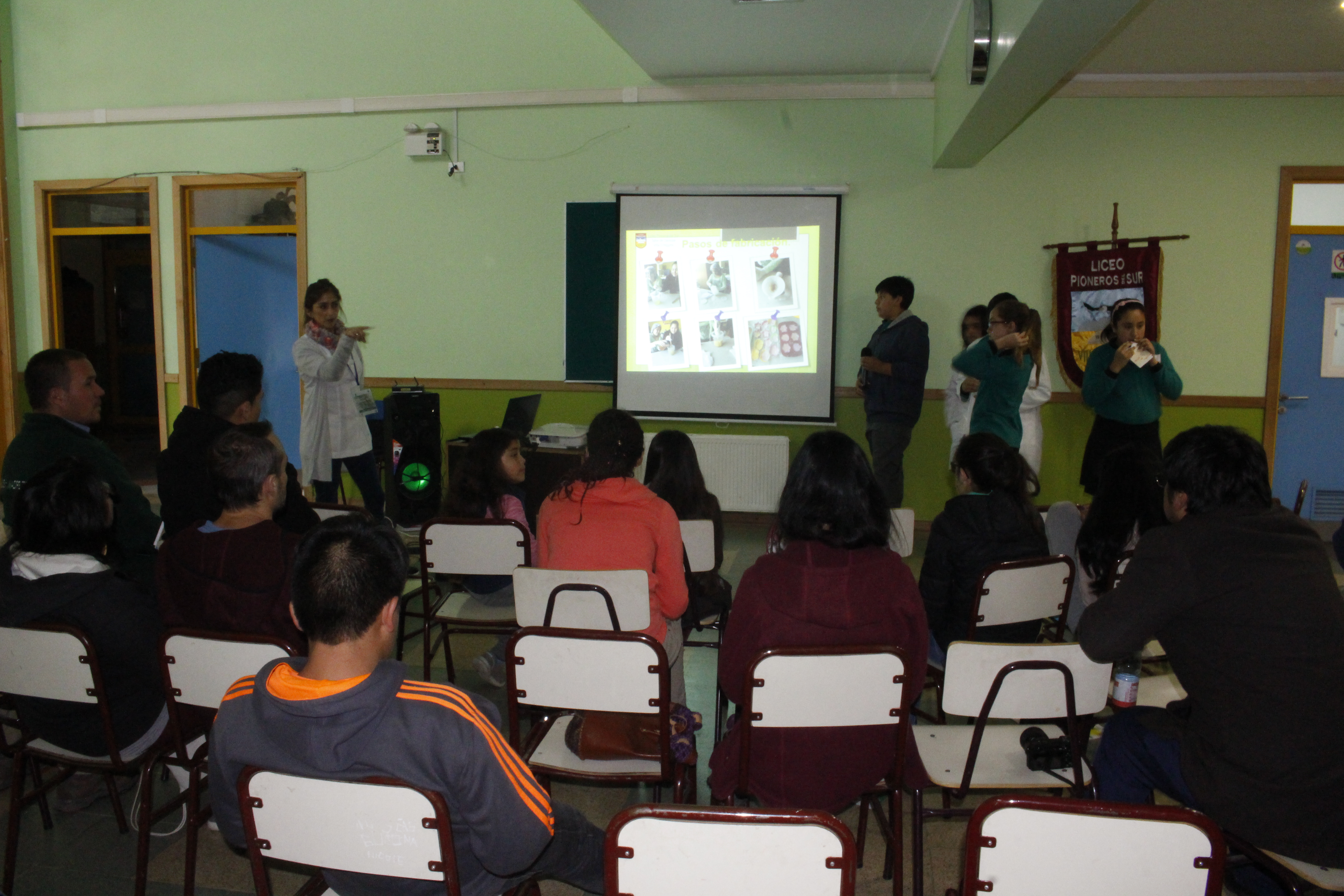
Minutes from reunions with the community
As a part of Parque Glaciar Mosco project, we organized some reunion were the whole community were invited. Through these gatherings, they had the change to express their doubts, opinions and/or recommendations for the park. These information is also shared with the Parque Glaciar Mosco’s technical team.
Communal photo "Minga"
This iniciative consists on make a call to our neighbours and also to all the tourists who came to O’Higgins to send us their pictures of flora, fauna and fungi they took here, with the scientific name, common name and the owner of the picture (for the credits). With this material, we generated a diptych, which can be used as a field guide.
This idea started on a open meeting with the community, where 5 strategies related to environmental care were defined: dangerous waste, responsible pets tenure, arid extraction, air quality and biodiversity valorization. CONAF and Parque Glaciar Mosco proposed the creation of this field guide, which was delivered for free on the first Seminar about Biodiversity consciousness and valorization, to the people who participated.


